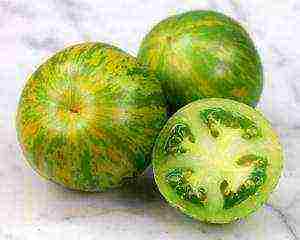Content
- 1 Camembert
- 2 Bree
- 3 Conte
- 4 Roquefort
- 5 Tom de Savoie
- 6 Saint Necter
- 7 Reblochon
- 8 Munster
- 9 Cantal
- 10 Epuas
- 11 Morbier
- 12 Shaurs
- 13 Fleeting
- 14 Valence
- 15 Coeur de Chevre
- 16 Delice de Bourgogne
- 17 Saint-Félicien
- 18 Rocamadour
- 19 Picodon
- 20 Puligny-Saint-Pierre
- 21 Crotin de Chavignol
- 22 Pelardon
- 23 Livaro
- 24 Layol
- 25 Pon-l'Evec
- 26 Bleu d'Auvergne
- 27 Saler
- 28 Chevroten
- 29 Features of the names
- 30 Classification
- 31 Fresh cheeses
- 32 Aged fresh cheeses
- 33 Soft white cheeses
- 34 Semi-soft cheeses
- 35 Hard French cheese
- 36 Blue french cheese
- 37 Flavored cheeses
- 38 Top 10 French cheeses
- 39 First place - Camembert
- 40 Second place - goat cheese, or Le chèvre
- 41 Third place - Breby Basque, or Basque Sheep Cheese
- 42 Fourth place - Conte
- 43 Fifth place - grated Emmental
- 44 Sixth place - Saint-Necter
- 45 Seventh place - Cantal
- 46 Eighth place - Emmental
- 47 Ninth place - Reblushon
- 48 Tenth place - Roquefort
- 49 Popular French cheese with an unpleasant aroma
- 50 The best French cheeses
French cheeses have long been the talk of the town. The title sounds like music to the ears of gourmets, and French President Charles de Gaulle said: "How can you rule a country in which there are 258 varieties of cheese." His quote refers to the first half of the 20th century, and today there are even more varieties. There are names of cheeses that have been produced in a particular region of France for more than one century, and their names, region of origin and production technology are protected by certificates at the state level.
We present you a list with photos of the best and most popular varieties of French cheese, which will help you navigate the world of gourmet delicacies and better understand the national cuisine of France.
Camembert
Perhaps the most famous French cheese, named after the area of its origin in Normandy. Camembert has a white velvety moldy crust, a soft greasy consistency, a delicate taste and a rather pungent aroma, which the French poet Fargue called "the smell of the feet of God."
 Camembert (photo: @realcheeseheads)
Camembert (photo: @realcheeseheads)
Bree
Brie is often confused with Camembert, and it really is similar in appearance and texture, but significantly inferior in the expressiveness of the aroma and in fat content (only 25%). For this reason, brie is considered the more versatile soft cheese that has been known since the Middle Ages.
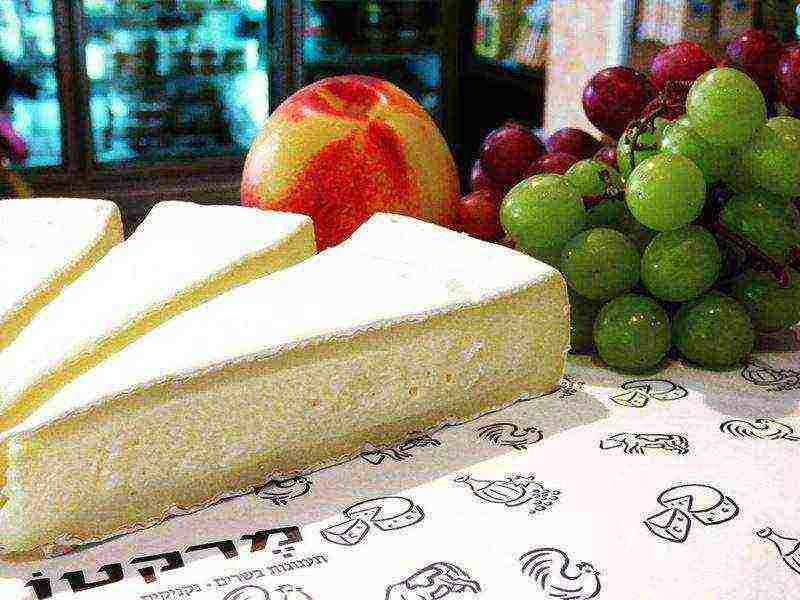 Bree (photo: @mercato_tlv)
Bree (photo: @mercato_tlv)
Conte
This hard French cheese is called the "Gruyere of Conte" for its similarity to the Swiss variety of the same name. The classic Conte is made from unpasteurized cow's milk and has a pleasant sweet taste with a nutty flavor.
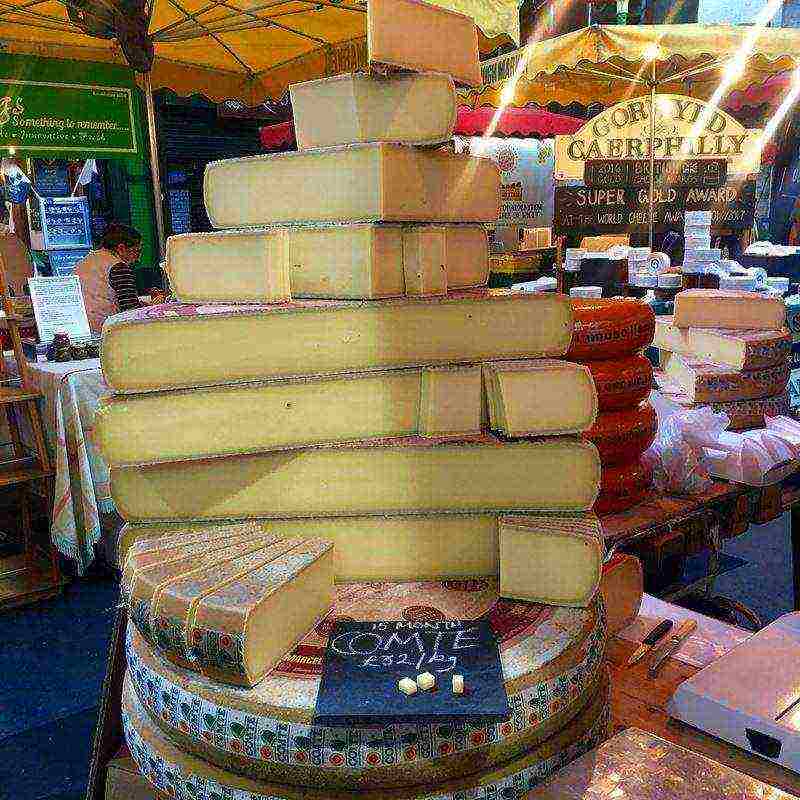 Conte (photo: @bettys_bite)
Conte (photo: @bettys_bite)
Roquefort
Another very popular French cheese all over the world is soft with a blue mold. Traditional Roquefort is made from sheep's milk and has a buttery texture and a salty taste.
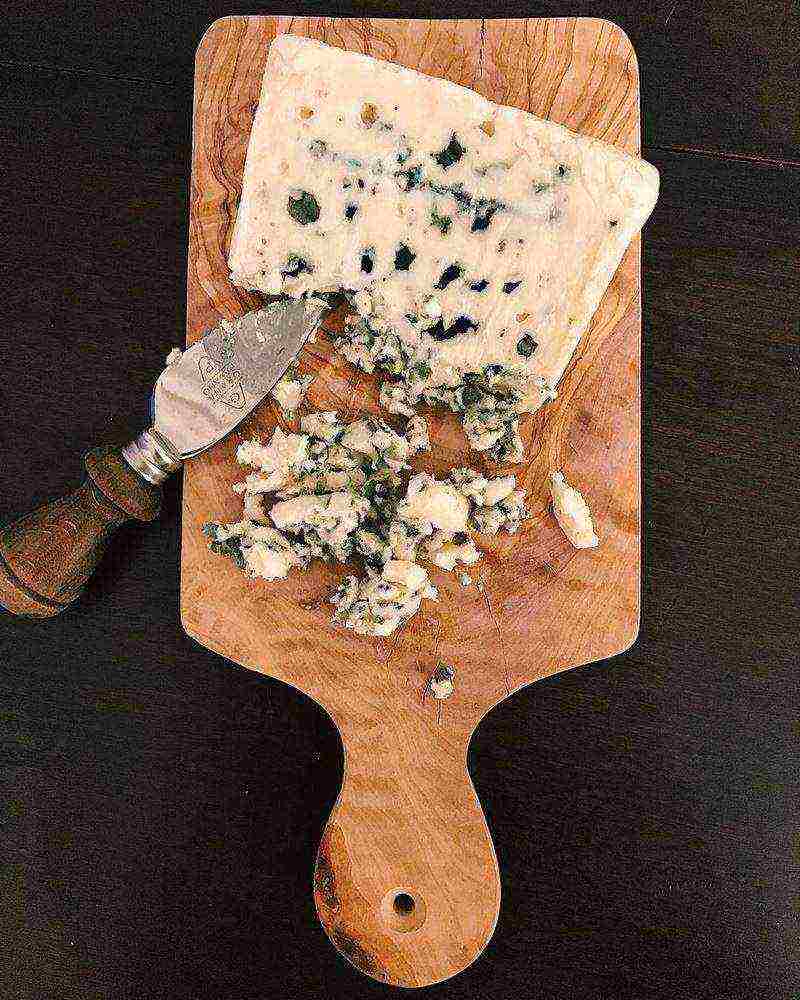 Roquefort (photo: @ 24cheeses)
Roquefort (photo: @ 24cheeses)
Tom de Savoie
Semi-hard cheese with an elastic consistency with a white moldy crust and small eyes. Produced in the regions of Savoy and Haute-Savoie. This is the only French certified cheese that can have a different fat content - from 10% to 25%.
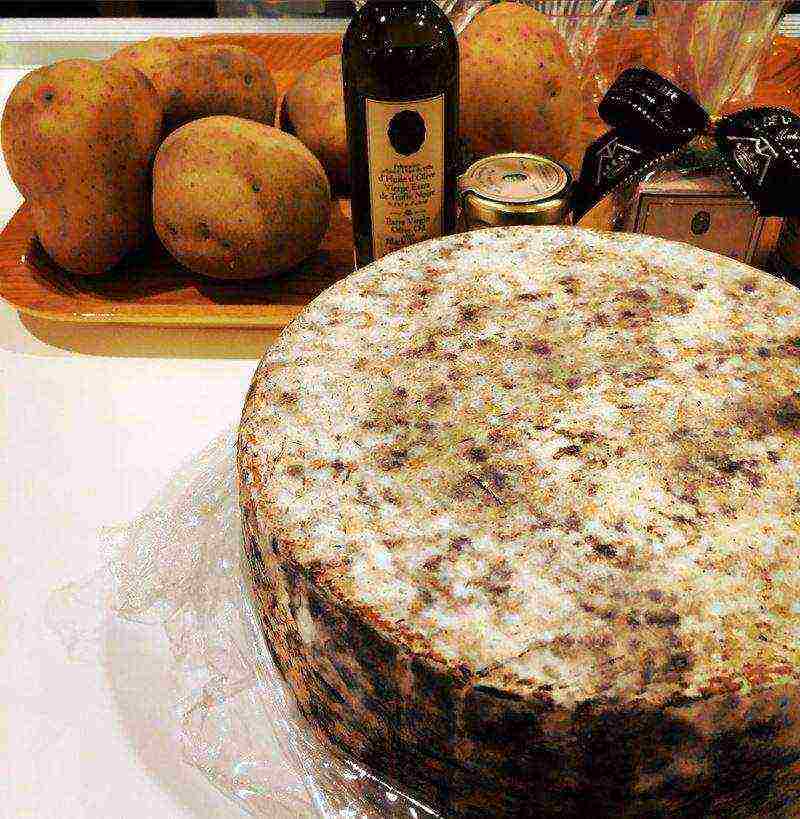 Tom de Savoie (photo: @gemmy_foods)
Tom de Savoie (photo: @gemmy_foods)
Saint Necter
The oldest cheese produced in the French region of Auvergne, it is also called the first farm cheese. Has a hard moldy crust, semi-soft texture and pulp with a delicate taste of wild mushrooms or spices. Ideal for serving with Bordeaux wines.
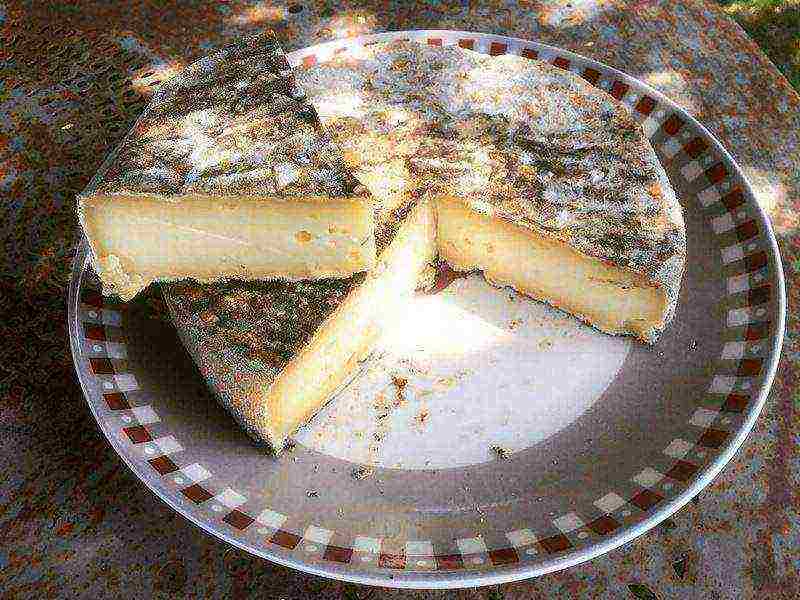 Saint-Necter (photo: @osteaddict)
Saint-Necter (photo: @osteaddict)
Reblochon
Reblochon de Savoie is a soft cheese from Savoy with a hard rind washed in brine and an intense aroma. The French village of La Clusaz hosts a separate Reblochon festival, during which cheese is prepared and tasted on site.
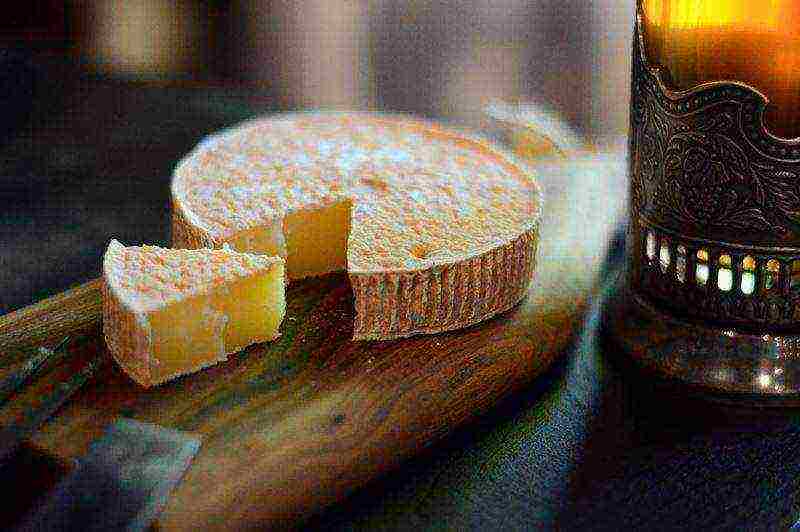 Reblochon (photo: @realcheeseheads)
Reblochon (photo: @realcheeseheads)
Munster
Munster-Jerome is a soft cheese with a washed orange-red crust and a very pungent aroma. It began to be produced by Italian Benedictine monks in a monastery in the French department of the Vosges. Later, the village of Münster appeared on this place, and the cheese got its name.
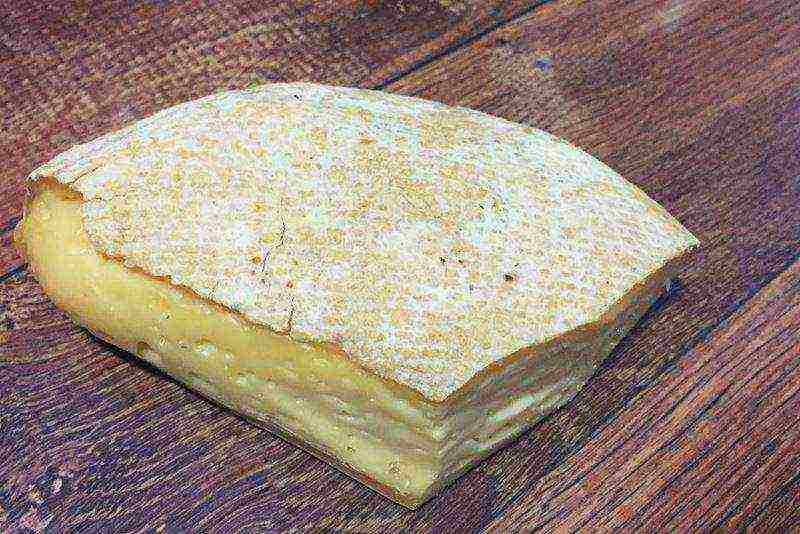 Munster-Jerome (photo: @julianoschier)
Munster-Jerome (photo: @julianoschier)
Cantal
Another hard cheese from Auvergne, which is considered one of the oldest varieties in France. Farmer canthal is made from raw milk, and for commercial purposes - from pasteurized milk. The cheese is distinguished by a bright pronounced taste and aroma, its crust is hard and thick.
 Cantal (photo: @melbourneandcheese)
Cantal (photo: @melbourneandcheese)
Epuas
Soft, tender cheese with an orange or brick-red crust, depending on ripeness. It began to be produced in the commune of Epuas in Burgundy, and is said to have been Napoleon Bonaparte's favorite cheese. It is eaten with a dessert spoon and served with Burgundy wines.
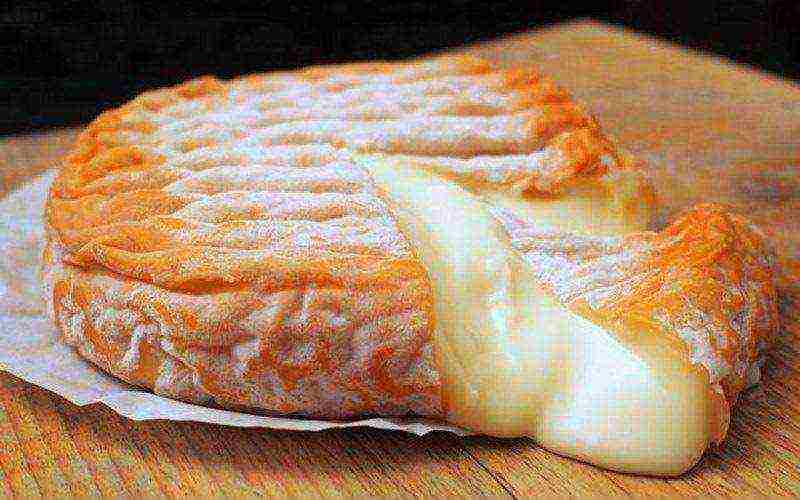 Epuas (photo: @porkewedeli)
Epuas (photo: @porkewedeli)
Morbier
Morbier, like the Conte, comes from the French region of Franche-Comte. It is a semi-soft cheese with a hard crust that has one "decorative" feature that sets it apart from many others. In the middle of the cheese circle is a thin strip of crushed charcoal. Today it is just a tribute to tradition, and once a strip of soot was a necessary measure.
French peasants made morbier, composing it from two pieces of fermented milk. The first piece was obtained after the evening milking of the cow, the second after the morning one. Thus, the first piece of cheese had to wait one night, and so that it did not deteriorate, it was smeared with a layer of soot on top, and the next day a second piece was placed on it.
 Morbier (photo: @saltynsweets)
Morbier (photo: @saltynsweets)
Shaurs
A soft cheese with a dense white moldy crust, which has been produced since the 14th century. The cheese has a delicate, slightly sour taste and a nutty-mushroom aroma.
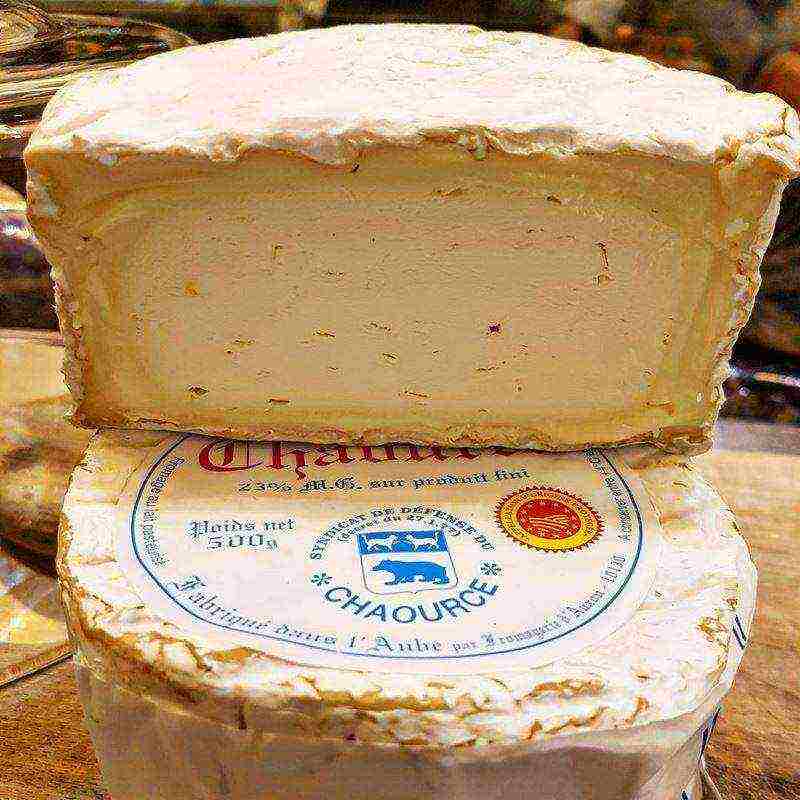 Schaurs (photo: @ yeor.lifestyle)
Schaurs (photo: @ yeor.lifestyle)
Fleeting
Mimolet is a recognizable bright orange cheese with a spherical head. Its production began by decree of Louis XIV, according to which it was necessary to create a French analogue of the Dutch edam. In order for the fleeting to have visible differences, a vegetable dye was added to it. The birthplace of this cheese is the city of Lille in the north of France.
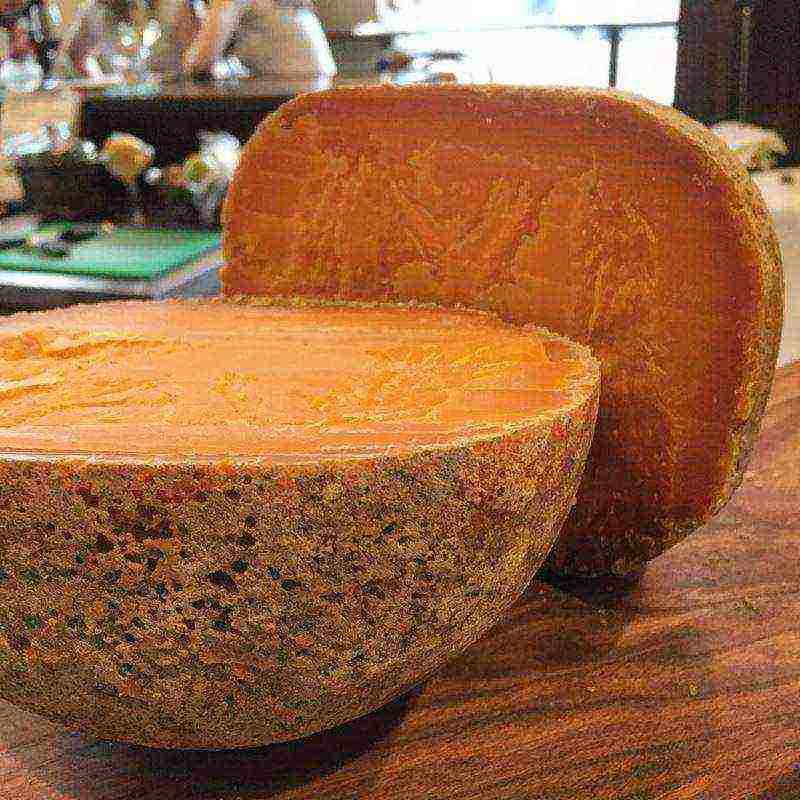 Mimolette (photo: @lajambedc)
Mimolette (photo: @lajambedc)
Valence
Goat cheese in the shape of a pyramid without a sharp top, has a delicate taste and aroma. The moldy crust of the cheese is dense and has a blue-gray tint due to the fact that it is sprinkled with wood ash. Recommended for pairing with white wines.
 Valence (photo: @parisismykitchen)
Valence (photo: @parisismykitchen)
Coeur de Chevre
The name translated from French means "goat's heart", which clearly characterizes this cheese. It is made from raw goat's milk and the cheese head is shaped into a heart. The cheese is soft, with a moldy crust, the color varies from delicate white for young and grayish for mature.
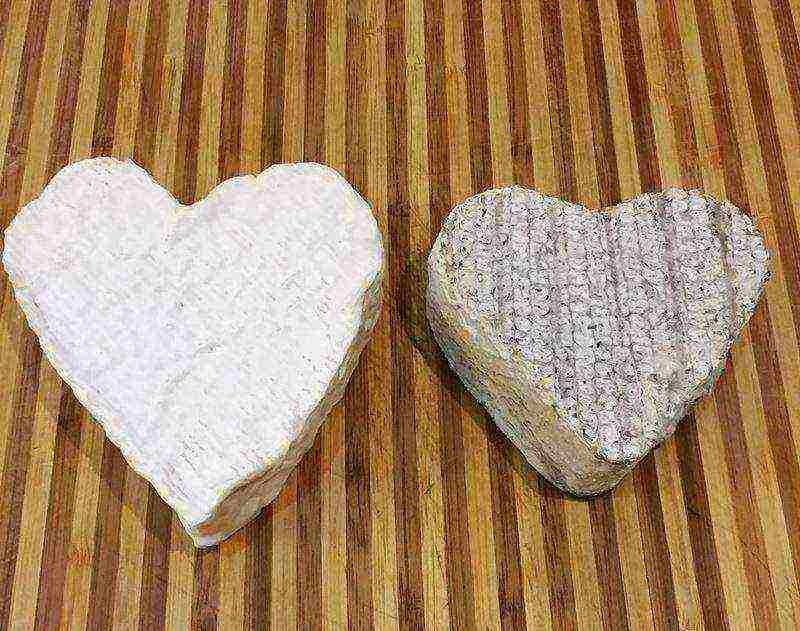 Coeur-de-Chevre (photo: @ 181delicatessen)
Coeur-de-Chevre (photo: @ 181delicatessen)
Delice de Bourgogne
"Delicacy from Burgundy" has been known in regional French cuisine since the 18th century. This delicate soft cream cheese has a firm, light flesh covered with a velvety mold crust.
 Delis de Bourgogne (photo: @infamousmarysia)
Delis de Bourgogne (photo: @infamousmarysia)
Saint-Félicien
Soft French cheese with a pronounced milky-creamy taste. It is forbidden to add any spices and additives to it that would disturb the harmony of its taste and aroma.
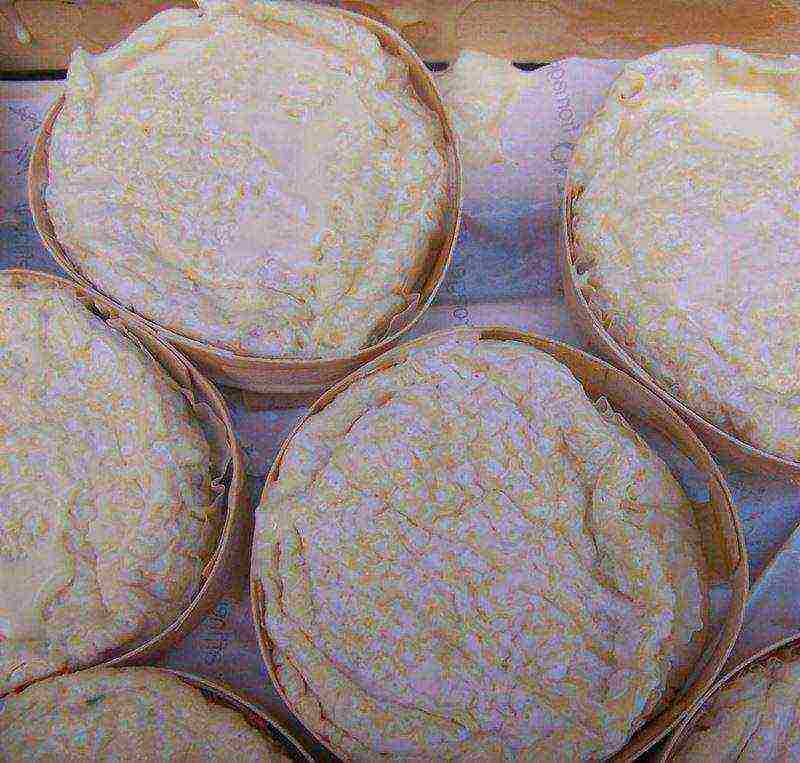 Saint-Félicien (photo: @ 111quesos)
Saint-Félicien (photo: @ 111quesos)
Rocamadour
Soft goat cheese with a moldy crust and sour pulp with a delicate nutty flavor. Produced in the Lo department in Occitania.
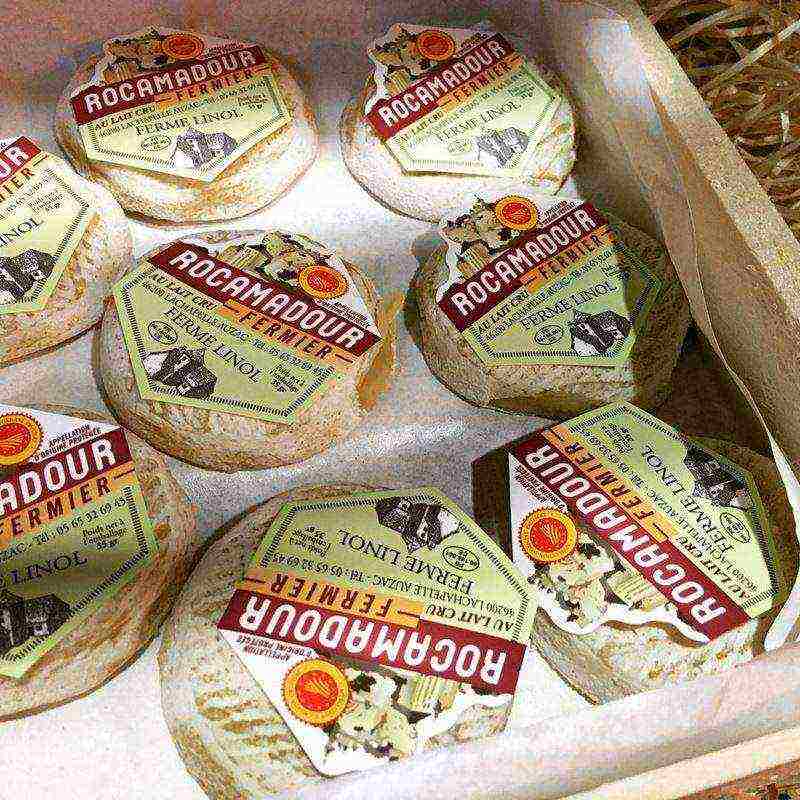 Rocamadour (photo: @ruthstameister)
Rocamadour (photo: @ruthstameister)
Picodon
Another soft goat cheese produced in the Auvergne-Rhône-Alpes region. It has several varieties, which differ in maturity and taste. Young cheese has a light flesh and crust, and as the degree of maturity of the picodon increases, its flesh becomes denser, and the moldy crust becomes blue.
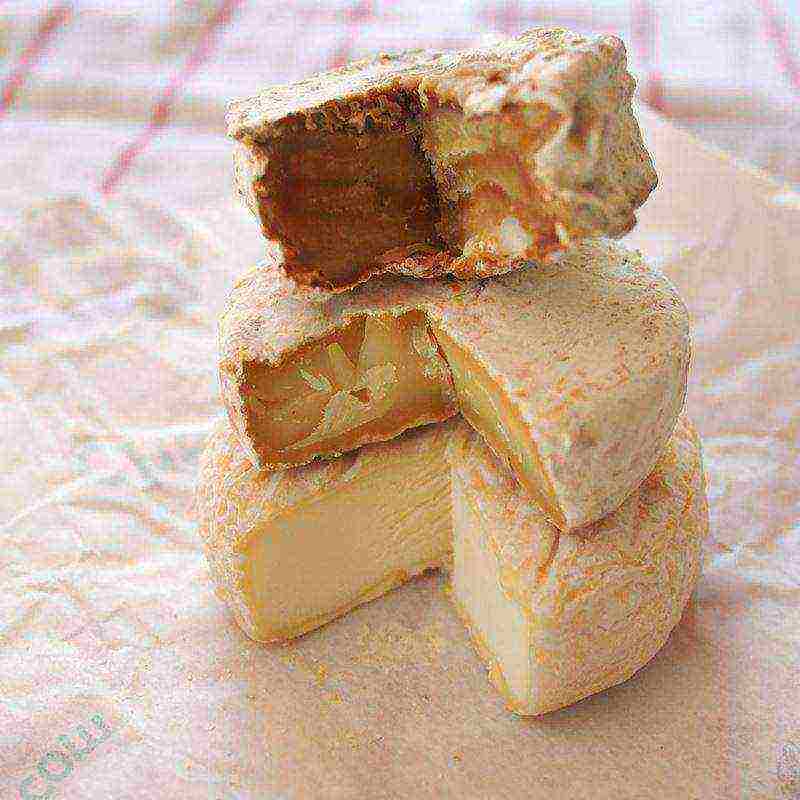 Picodon (photo: @cheesetrotteurs)
Picodon (photo: @cheesetrotteurs)
Puligny-Saint-Pierre
Soft goat cheese in the shape of a pyramid, for which it is often called the "Eiffel Tower". The crust is moldy, bluish, the flesh has a slight hazelnut flavor.
 Puligny-Saint-Pierre (photo: @cheesetrotteurs)
Puligny-Saint-Pierre (photo: @cheesetrotteurs)
Crotin de Chavignol
Soft cheese made from goat's milk, which is usually served with fruits and white wines. The cheese comes from the French village of Chavignol, where it began to be produced back in the 16th century.
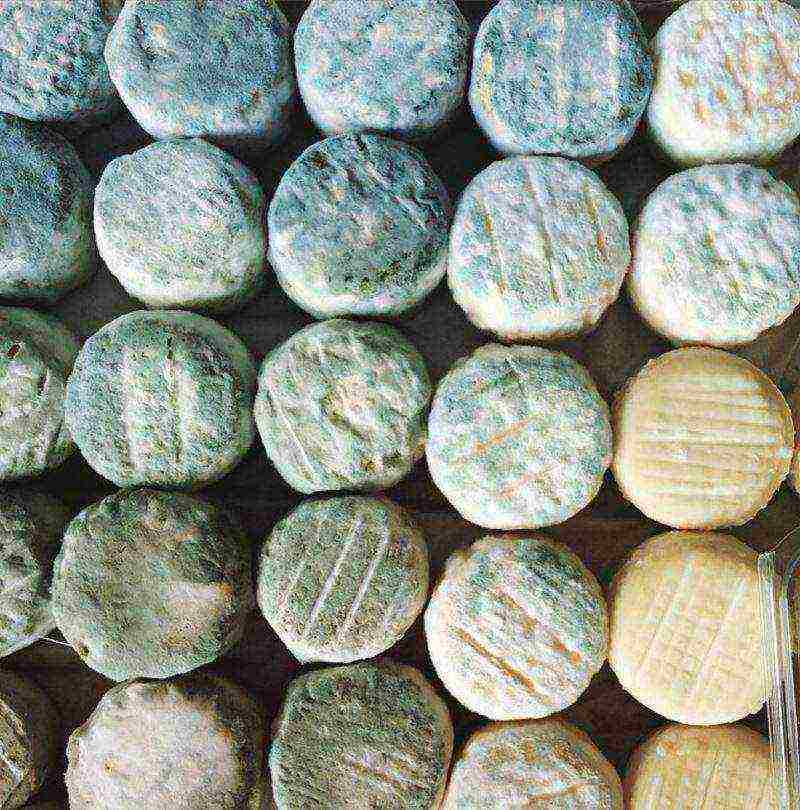 Crotten de Chavignol (photo: @osteaddict)
Crotten de Chavignol (photo: @osteaddict)
Pelardon
Delicate French Pelardon is considered the oldest goat cheese in Europe.In addition, thanks to the grazing of goats on natural pastures, the cheese is made from organic milk, which cannot but inspire the eco-conscious gourmet.
 Pelardon (photo: @cheesetrotteurs)
Pelardon (photo: @cheesetrotteurs)
Livaro
Soft cheese from Normandy, which was once called "the meat of the poor", but today it is a real elite product. Livaro is made from cow's milk, its pulp, depending on maturity, has a more or less rich yellow-orange hue. Livaro's crust has a deep orange color thanks to the vegetable dye that is used to color the product during the ripening period.
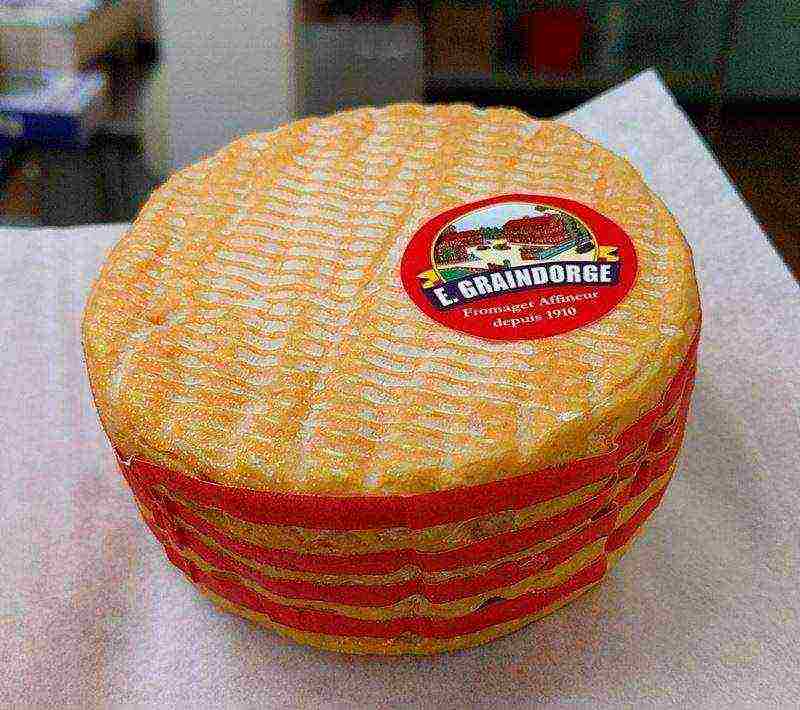 Livaro (photo: @moon_yeka)
Livaro (photo: @moon_yeka)
Layol
Semi-hard cheese made from unpasteurized cow's milk. Layol has a thick brown-gray crust, and the flesh has a sour taste with pronounced shades of aromatic herbs.
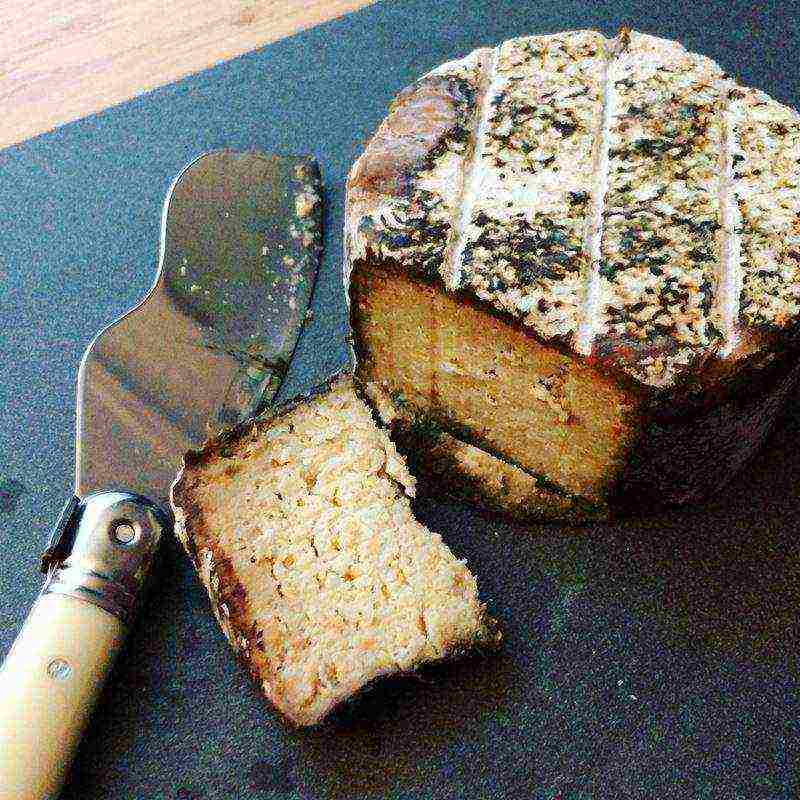 Layol (photo: @redvioletblog)
Layol (photo: @redvioletblog)
Pon-l'Evec
Soft cheese made from cow's milk, produced in Normandy. The first mentions of this cheese are found in the historical annals of the 12th century. Has a washed moldy crust, a pungent aroma and a sweetish aftertaste. It goes well with cider and red wines.
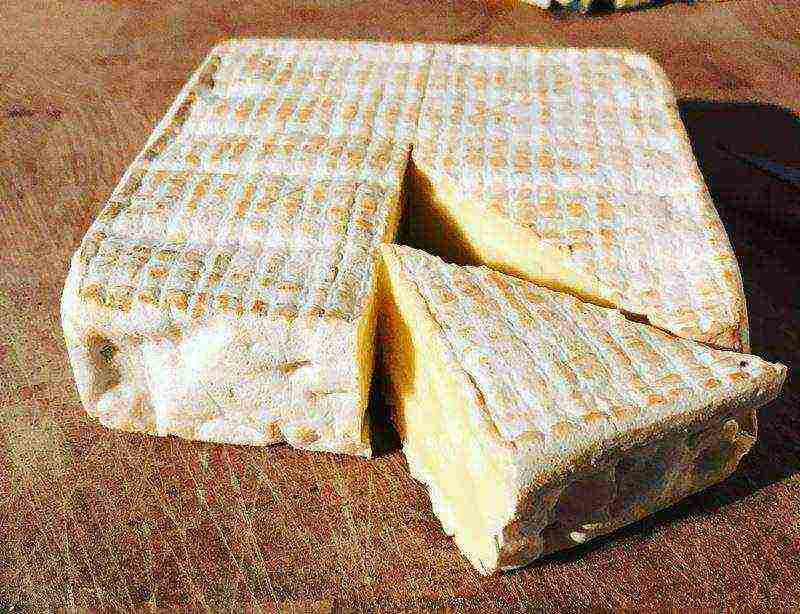 Pont-l'Eveque (photo: @cavebrut)
Pont-l'Eveque (photo: @cavebrut)
Bleu d'Auvergne
Blue cheese from Auvergne, which is less salty than other blue cheeses. Its texture is oily, and the cheese itself is more delicate in taste.
Bleu d'Auvergne (photo: @alain_hess)
Saler
Semi-hard cheese made from cow's milk, obtained from Saler cows. Saler is considered one of the oldest cheeses in France - its history goes back more than two millennia. The cheese has a deep rich taste and aroma, golden pulp, dense and at the same time soft texture.
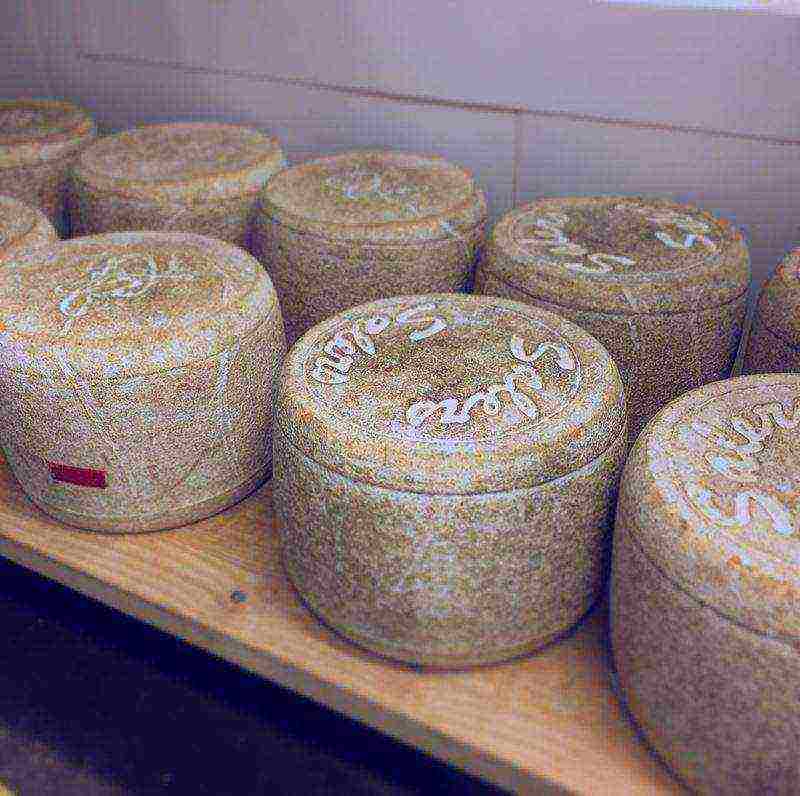 Saler (photo: @quesovaldivieso)
Saler (photo: @quesovaldivieso)
Chevroten
Soft savoy cheese made from raw goat's milk with a spicy nutty flavor. Has a dense moist pulp with holes, dense crust from yellow to orange, covered with a pronounced coating of white mold.
 Chevroten (photo: @ alessandro.grano)
Chevroten (photo: @ alessandro.grano)
Cheese is the pride of France. They are known all over the world for their unsurpassed taste and aroma.
In French, the word "cheese" sounds like "le fromage" (or in the original - le fromage). It is believed that it comes from a distorted "form", that is, "formation" or "molding". And this is no accident. After all, the layout of the curd mass, which is formed as a result of the curdling of milk into molds, is a very important stage in the manufacture of real cheese.
To date, more than 500 types of this dairy product are produced in France. Moreover, each of them is unique in its own way. French cheeses can be soft or hard, young or aged, covered with a hard crust or mold, from goat or cow milk.
However, specialists are surprised not only by the variety of types of this product, but also by the incredible number of its forms. So, French cheeses, photos of which are presented in this article, are produced in the form of circles, discs, rectangles, drums, squares, standing and lying cylinders, ingots, cones, hearts and triangles.
Why isn't this product made in a single form? The fact is that all French cheeses have their own personal history, life and even character. For example, cheeses such as Brie and Camembert are always made in the form of a disc. Indeed, it is in this form that the product ripens evenly and turns out to be very tasty.
Features of the names
All French cheeses have not only their own character and individual history, but also a unique name. Moreover, each product carries the AOC label. It means that this variety owns Appellation d'origine contrôlée, that is, the Original Controlled Name, which can only be assigned to those cheeses that meet all the requirements of current legislation.
Thus, any type of French cheese should be made only from quality raw materials, that is, milk. Moreover, the entire manufacturing process of the product must strictly comply with local established recipes and traditions.

The cheese, which has a corresponding French name, can only be produced in the region of France where it was prepared historically.
The first AOC label was given to Roquefort cheese in 1925, and the last to Rigott de Condre cheese in 2009.
Classification
Each state has its own classification of cheeses with its own system and terminology. But most of this product can be easily classified into groups based only on its structure, types of crusts and the principle of formation, on which the amount of moisture in the cheese (or the so-called whey) depends.
Based on this system, cheeses from France can be divided into types such as:
- fresh;
- fresh aged;
- soft white;
- semi-soft;
- solid;
- blue;
- flavored.
It should be said that this or that French cheese recipe can include either cow's, or goat's, or sheep's milk. In addition, this product can be produced on private farms or industrially.
Fresh cheeses
To understand what differences certain types of French cheeses have, you should consider them in detail.
Fresh cheeses are fairly easy to distinguish from other varieties. After all, they have a white and shiny surface. This product has no rind. As a rule, it is ready for use within a few days or even hours after production.
Fresh cheeses barely have time to show the aroma of the raw materials used in them. Their taste is usually described as sweetish, milky, sourish or refreshing.
French soft cheese Boulette de Cambre is a fresh cheese. It is characterized by a high moisture content. Thanks to this, it becomes soft. It is made from cow's milk with the addition of parsley, tarragon, chives and other herbs.
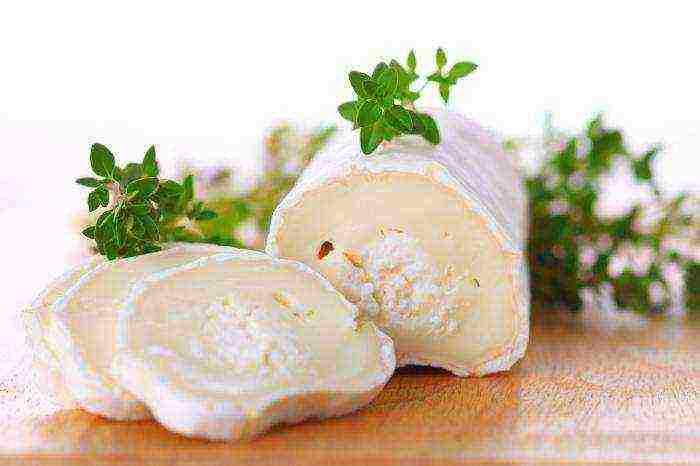
The consistency of fresh cheeses can be loose, crumbly or fibrous. However, such a product is often made in a solid form and resembles butter.
Fresh cheese is consumed by spreading it on crispy bread. In addition, light fruit wine is served.
Aged fresh cheeses
Unlike fresh cheeses, this type was ripened and dried in cellars with a special regime of humidity and temperature or in special chambers. As a result of this treatment, the product is covered with a crust of yeast and mold.
The most famous representatives of this type are cheeses produced in the Loire Valley. As a rule, they are made from goat milk with the addition of aromatic herbs and spices. Such cheeses are wrapped in chestnut or grape leaves, on the surface of which mold forms.
The traditional French goat cheese Saint-Maur de Touraine is a cheese classic. Its surface, sprinkled with ash, is covered with fluffy white mold, as well as spots of yellow, pink and gray pigments. In the process of growth, the snow-white mass becomes more and more dense. Over time, the lemon flavor inherent in this product takes on a light nutty flavor.
Soft white cheeses
This type of cheese is covered with a white crust and has a grainy to almost liquid consistency. They have an unsurpassed mushroom aroma. A more delicate variety of French cheese has a light shade of young mushrooms and hay, while a harder and more mature variety resembles a cream soup made from forest mushrooms, with a subtle bitterness of dandelion.
This product is made from goat, cow or sheep milk. In addition, white cheeses are often made from the milk of camels or buffaloes, which undoubtedly determines their color.
The crust of this type of cheese can be either brittle, thin and covered with white mold, or thick, velvety. These factors depend on the aging of the product and the choice of raw materials.
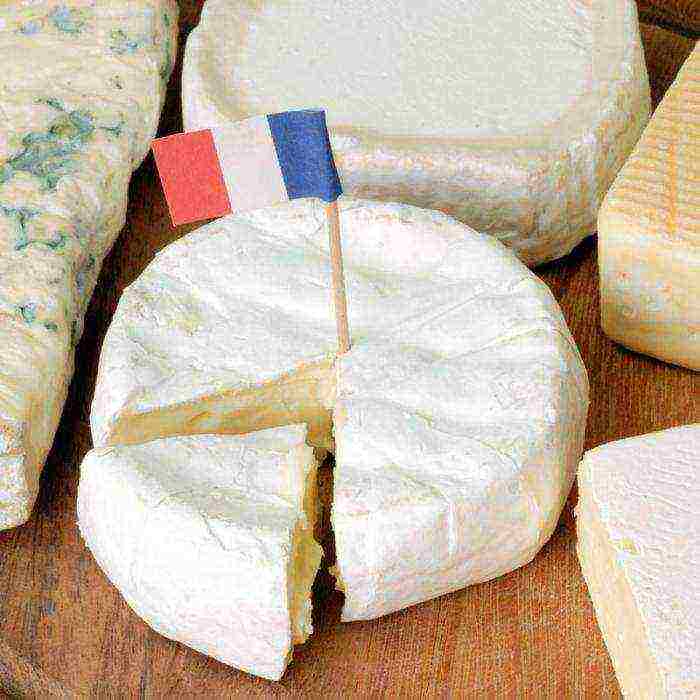
Young French cheese with a white mold has the consistency of chalk. Although it becomes creamy with age.
The most prominent representative of soft white cheese is the Camembert de Normandy. It is usually served with the elegant Côte du Rhône red wine.
Semi-soft cheeses
These types of cheeses are quite different from each other in consistency and appearance. They are divided into two groups:
- Slow-ripening dry rind cheeses.Their consistency ranges from firm with a delicate nutty sweet taste and a thin crust to firm sticky with a pungent floral taste and a "leather" crust.
- Cheese with a sticky orange crust. They have a rather soft consistency. The taste of such a product is spicy and piquant, with hints of smoke.
A striking representative of semi-soft cheeses is Gaperon. It is produced in Auvergne from cow's milk. The small hemispherical head of this product weighs about 400 g. Gaperon has elastic flesh and dry, tough crust. During the manufacturing process, pepper and garlic are added to it, which give the product a bright taste. Due to the fact that the cheese is hung by the fire to ripen, it acquires a distinct note of smoke.
Hard French cheese
Large heads of hard cheese in the form of a large wheel, drum or cylinder are found in almost all countries where cheese making is developed. As a rule, they are made from goat, sheep or cow milk. The crust of such a product can be either shiny and smooth or rough. As it matures, the aroma and flavor of hard cheeses becomes complex. Moreover, a product with a very long maturity becomes grainy and even crunchy.
The representative of hard cheese is Conte. This is a delicacy in French cuisine. It is produced in the Franche-Comte region in the east of the country. Once made, many farmers send this cheese to large dairy companies for aging. In cellars, it matures for two years.
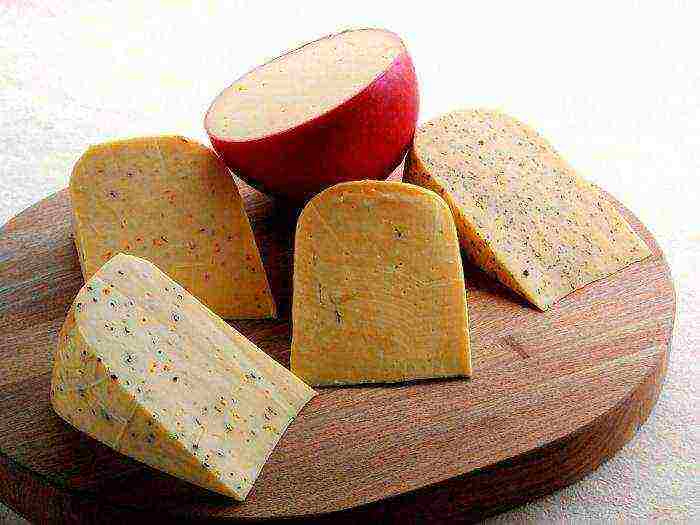
The taste of hard cheese depends on the aging period. A fully ripe product can have a pungent taste. As for the young cheese, it remains soft, milky and nutty.
Blue french cheese
Blue mold belongs to penicillins. Unlike white, it develops not outside, but inside the cheese.
Thanks to the blue mold, a huge amount of cheeses are created. Most are wrapped in foil to help keep the rind moist and sticky.
Despite the variety of blue cheeses, they all have a pungent and spicy flavor and also have light metallic notes. The salt content in these varieties is much higher than in others. The blue mold present in them gives the product not only an unusual color, but also a strong aroma.
In the context, cheeses with a moist crust have irregular cavities and streaks of mold. For varieties with a hard crust, they are denser.
The most prominent representative of blue cheeses is Roquefort. Its homeland is the Southern Pyrenees. In their caves, he matures.
According to legend, this product appeared about two thousand years ago. Carried away by his beloved, the shepherd boy left his lunch in the form of a slice of bread and a piece of cheese in a cave. He remembered about him only a few days later. When he returned, the shepherd found that a greenish mold had appeared inside the cheese.
Currently, Roquefort is produced in a volume of more than 18 thousand tons per year and is exported to almost all countries of the world.
Slices of this cheese are used along with bread, they are added to various sauces, sprinkled with salads and pasta. As a rule, sauternes or port are served with it. Dessert wines are often served with it. Their sweet taste obscures the harsh and salty flavor of cheese, bringing the aroma of sheep's milk to the fore.
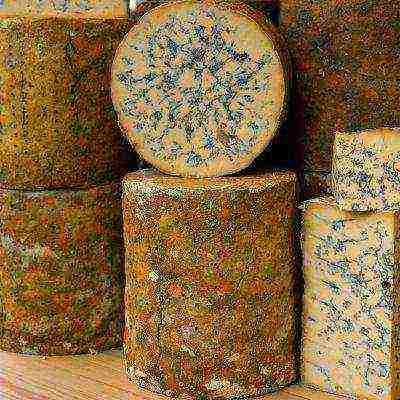
Flavored cheeses
In the 16th century, Dutch cheese makers began to add spices to their cheeses. By doing this, they have created an unusual mixture of quirky scents. The French flavored cheeses that are made today are popular semi-soft and hard varieties that have also been supplemented with aromatic herbs, fruits and other spices.
The most prominent representative of flavored cheese is Boulette d'Aven. To make it, producers use fresh sediment of Marai cheese. It is kneaded with tarragon, parsley, pepper and cloves.After that, the product is formed by hand, tinted with natural Annatto dye and sprinkled with paprika. By the way, it is the last spice that gives the cheese a sharp taste.
Top 10 French cheeses
A French cheese recipe can include completely different raw materials and additives. They determine its taste, color and aroma. The combination of these or those ingredients makes it possible to produce an incredible amount of various types of cheese, which, in fact, is what cheesemakers do.
It should be noted that the inhabitants of France have long formed their own personal preferences in relation to the presented product. In this regard, we decided to present you the top 10 French cheeses. This rating contains all the cheese classics that everyone should definitely taste.
First place - Camembert
This French cow's milk cheese is arguably the best. It is versatile, which is why it is incredibly popular among fans of this product.
The simplicity of production, combined with the relative cheapness and excellent taste, brings Camembert cheese to the first place in the rating.
Second place - goat cheese, or Le chèvre
French goat cheese takes an honorable second place. After all, it has a very bright and pronounced taste. This product is ideal for summer toasts and salads. What's more, it bakes well and goes well with a wide variety of wines.
Third place - Breby Basque, or Basque Sheep Cheese
It is a hard cheese made exclusively from sheep's milk. It is quite greasy, has a pleasant texture, taste and aroma.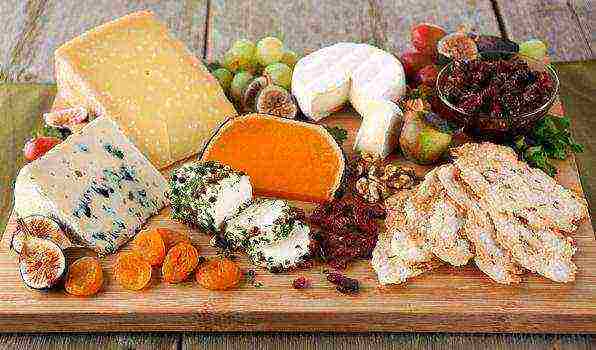
Fourth place - Conte
It is a hard French cheese that gets its name from the region where it is produced (Franche-Comté). The cows whose milk is used to make this product are grazed at an altitude of more than 400 meters above sea level. It is made in small quantities in cooperative village cheese dairies. The technology for the production of such cheese has remained unchanged for several centuries.
Conte melts well, so it is often used to prepare delicious French cuisine (various types of soups and pies, fondues, salads, sauces, etc.). Its fruity flavor and creamy flesh are ideal for white meats, fish and dry wines.
Fifth place - grated Emmental
This cheese has become very popular not only because of its extraordinary aroma and taste, but also because of the form in which it goes on sale. After all, modern housewives do not want to spoil their manicure in order to grate cheese and sprinkle eggs, pasta or omelet. That is why grated Emmental was placed in fifth place in the ranking of the most delicious and popular French cheeses.
Sixth place - Saint-Necter
It is a French cheese made from cow's milk and matures in 5-8 weeks. For its manufacture, rennet sourdough is used. Its pulp is very tender and firm. The cheese has a yellowish color and tastes like hazelnuts, salt, mushrooms and spices.
Typically, such a product is marketed in the form of a flat cylinder, which has a diameter of 21 cm and a weight of 1.7 kg. All Saint Necter cheese is covered with a hardened crust.
Seventh place - Cantal
This is a hard cheese, which is a native of central France, more specifically the Auvergne region. Very old recipes and technologies are used in its production. It has had the AOC status since 1956. This product is produced both in local dairies and on private farms.
The taste of Cantal cheese directly depends on the aging period. For example, a fully ripened product has a rather pungent taste. Young cheese is very soft and has a nutty and milky flavor.
Such a product requires decent support. Only Burgundy wine is served with it.

Eighth place - Emmental
This product has a spicy and sweetish taste with a characteristic piquancy. Large cavities are visible in the section of this cheese.Their presence is attributed to the manufacturing process, as a result of which the bacteria release carbon dioxide. In some countries, it is called Swiss, since it was in this state that it was first produced.
In combination with cheese such as Gruyere, Emmental is used to make fondue.
Ninth place - Reblushon
This is a French soft cheese made from unpasteurized cow's milk in the Savoy region, which lies at the foot of the Alps. This product has a so-called washed crust. After all, after pressing, it is thoroughly washed in brine.
Originally Reblochon was made in the Arlie and Ton valleys. Its name comes from the verb reblocher, which translated from French means "to re-milk a cow." According to legend, in the 16th century, peasants paid a tax that depended on the amount of milk they milked. To reduce the tribute, cows were not fed in the presence of officials. But after the tax collectors left, this process was carried out again. It was from this milk that the peasants made the excellent Reblushon cheese.
This product is produced in the shape of a circle, which takes 2-4 weeks to mature. The finished cheese has an orange rind with a thin white bloom and a sweetish pulp.
Tenth place - Roquefort
This is blue French blue cheese. It is ideal for preparing fresh vegetable salads. In addition, this product is served with toast and white wine. It is made from pasteurized sheep milk. After a long aging, the cheese acquires the taste of hazelnuts.
Now you know which dozen cheeses are most popular among the French. But in addition to the listed varieties, I would like to present others. If our rating were 11th place, then it, without a doubt, would have been taken by the French soft goat cheese Sainte-Mor-de-Touraine, which has a salty-sour taste and nutty aroma. It ripens from 10 days to 6 weeks.
In addition, I would like to highlight the French soft goat cheese called Chabichou du Poitou. It has a specific milk smell and a strong nutty aroma.
Popular French cheese with an unpleasant aroma
Vieux Boulogne is the stinkiest French cheese produced in Boulogne-sur-Mer in Nord-Pas-de-Calais. It is made from unpasteurized cow's milk and matures in 7-9 weeks. The head of this product is square.
Vieux Boulogne cheese is known all over the world for its strong aroma. In the fall of 2004, specialists from Cranfield University awarded him the status of "the most stinking cheese."
To visit France and not taste real French cuisine is practically not to be in France at all. The cuisine of any country says a lot about its inhabitants, and in France the profession of a cook is the most popular, so their cuisine is really something fantastic. More than 500 types of cheeses are officially registered in France, but in fact there are even more cheeses in this country. Today we are going to talk about the most famous French cheeses in the world, maybe you would like to try them?
The best French cheeses
1. Abondance.French cheese, known since the 14th century. Region of origin: Haute-Savoie.
- Type of cheese: semi-hard sliced;
- Taste: delicate, mild, full-bodied taste with a fruity undertone and a light nutty flavor.
2. Banon.A cheese with a thousand-year history, known since the days of Ancient Rome.
- Cheese type: soft;
- Taste: taste and aroma of chestnut and essential oils;
- Wine: blackcurrant liqueur.
3. Bleu-de-Gex.One of the oldest French cheeses. It began to be made in the 13th century.
- Cheese type: soft with blue mold;
- Taste: slightly pungent taste with a nutty-mushroom aftertaste and light bitterness.
4. Bleu de Cossus.One of the first blue cheeses in the world. Once upon a time it could rightfully be called royal, because it was mentioned by Gaius Julius Caesar himself.Charlemagne also liked this cheese, after which it was actively served at the royal table.
- Cheese type: soft with blue mold;
- Taste: salty, almost peppery with the aroma of mushrooms and damp cellar;
- Wine: sweet red wines.
5. Beaufort.Monks were the first to produce this cheese in France following the recipe of the Roman Empire, but it gained its greatest popularity only in the 18th century.
- Type of cheese: semi-hard sliced;
- Taste: salty with a pleasant fruity aroma and delicate aftertaste;
- Wine: Chablis, Roussette, Chignin, Apremont.
6. Bree... The most famous French cheese, which has not lost its popularity since the Middle Ages. Bree has always been the cheese of kings, so you should definitely try it at least once in your life.
- Cheese type: soft;
- Taste: mild taste, aroma with a slight smell of ammonia. Moldy crust has an ammonia flavor, but is edible.
- Wine: Chateau Clarcke 1993.
7. Broccio.The cheese comes from Corsica, which considers Broccio to be their national treasure.
- Cheese type: soft;
- Taste: sweetish-spicy, moderately salty;
- Wine: white wine.
8. Valence.An unusual cheese in the shape of a truncated pyramid. According to legend, Napoleon himself chopped off the top of the cheese in the shape of a pyramid after the failed Egyptian campaign. Today Valence is the business card of the province of Berry.
- Cheese type: soft;
- Taste: pleasant sweetish taste with hints of hazelnut;
- Wine: white wine.
9. Camembert.Another world famous French cheese. According to legend, the first head of this cheese was made by a Norman peasant woman named Marie Arelle following the recipe of a fugitive monk.
- Cheese type: soft with white mold;
- Taste: spicy and pungent taste, reminiscent of the taste of mushrooms;
- Wine: young red wine.
10. Conte.Delicious cheese, originally produced only in the French region of Franche-Comté. Today, this popular cheese is made in many regions of France.
- Type of cheese: semi-hard sliced;
- Taste: fruity and nutty taste;
- Wine: light red wine.
11. Layol. Monastic cheese, invented in the 19th century.
- Cheese type: semi-hard;
- Taste: sour aftertaste with hints of mountain herbs: thyme, gentian and fennel.
- Wine: red wine.
12. Langres. A bright soft unpressurized cheese from the Champagne region. Young enough.
- Cheese type: soft pressed;
- Taste: smoked bacon flavor;
- Wine: red wine.
13. Livaro... Elite cheese from Lower Normandy. In the 19th century it was the most popular cheese in this region.
- Cheese type: soft;
- Taste: exquisite bright taste and aroma;
- Wine: Norman cider, Calvados, white Alsatian wine and red Bordeaux wines.
14. Marual.Another name for this cheese is Mara. This cheese is cobblestone-shaped and has a reddish color. At one time, it was preferred by many French kings.
- Cheese type: soft;
- Taste: spicy, tart and strong taste. Specific smell;
- Wine: Lalande-de-Pomerol, Chateau-neuf du pape, Cahors and Moulis.
15. Fleeting.Reddish cheese, once made for the first time by order of Louis XIV himself, as an analogue of edamer.
- Cheese type: hard;
- Taste: fruity-bitter taste;
- Wine: light red wine, light beer, noble red Bordeaux or Burgundy wines, as well as sherry and port.
16. Morbier.Pressed uncooked cheese. The first mention of it was made in 1795. A characteristic feature of the cheese is a layer of crushed charcoal.
- Cheese type: semi-hard;
- Taste: fruity and nutty taste;
- Wine: Sancerre, Pouilly, Seyssel.
17. Munster.One of the oldest European monastery cheeses. The name of the cheese is literally translated as "monastery."
- Cheese type: soft;
- Taste: delicate creamy taste, but a pungent smell;
- Wine: grape vodka and Alsatian wine Gewurztraminer, Pinot Gris d'Alsace.
18. Neuchâtel.Beautiful and delicious heart-shaped cheese. During the Hundred Years War, girls gave cheeses of this shape to men. This is how the lover acquired his famous heart shape. The first mention of this cheese dates back to 1035.
- Cheese type: soft;
- Taste: delicate mushroom taste and aroma;
- Wine: red wine.
19. Pelardon.Goat cheese, mentioned in the treatise "Natural History". Previously, this cheese had many names, but by the 19th century only one remained - "Pelardon."
- Type of cheese: with a bluish mold;
- Taste: the most delicate taste and aroma with a sharp edge and salty aftertaste;
- Wine: Costieres du Gard, Clairette du Languedoc.
20. Pon-l'Evec.A square-shaped cheese that is relatively rare today, despite its exquisite taste and rich history.
- Cheese type: soft;
- Taste: pronounced taste and aroma with a tangy aftertaste;
- Wine: aged white Burgundy and Pomerol wines, dry apple cider.
21. Reblochon.The name of this cheese can be literally translated as “re-milking the cow”. According to legend, in the 14th century, peasants had to pay a tax based on the amount of milk they milked. The cows had to be milked in the presence of tax collectors, and in order not to overpay, the peasants did not milk the cows, and then milked them again. Such fatty milk made a wonderful cheese.
- Cheese type: soft;
- Taste: rich fruity taste with nutty notes;
- Wine: Savoyard white wines.
22. Roquefort.The famous French blue cheese. According to legend, an amorous shepherd left a sandwich with sheep cheese in the pasture and returned there a month later. Naturally, the cheese was covered with blue mold, but the shepherd still decided to eat it. And he really liked the taste of the cheese.
- Cheese type: blue cheese;
- Taste: hazelnut flavor;
- Wine: Cahors, Porto, Sauternes.
23. Rollo.Another monastery cheese, first made in the 17th century on the territory of the Maroual monastery. This cheese fell in love with Louis XIV and gained such popularity that it was even used as a monetary equivalent.
- Cheese type: soft;
- Taste: salty taste with bitterness;
- Wine: Sancerre.
24. Emmental.Actually Emmental is a Swiss cheese, but there is also Emmental French produced in Savoy.
- Cheese type: semi-hard;
- Taste: sweetish, spicy taste and aroma;
25. Saler.This cheese is more than two thousand years old, and it is still made according to old technologies.
- Cheese type: semi-hard;
- Taste: mild and delicate taste with a bitter aftertaste. Herbal aroma;
- Wine: white, rosé and red wines.
See also the article: The most delicious cheeses in the world.
You may also be interested in
List of cheesesmanufactured in France. According to some reports, the number of cheese varieties produced in France is more than 500.
The list contains the Russian name of the cheese with a link to the article and the original French name. The AOC mark means that this type of cheese has Appellation d'origine contrôlée, Aboriginal controlled name. “The original controlled name can be assigned to cheeses that meet the requirements of the current legislation. The production of raw milk and the entire cheese making process must be in exact accordance with local traditions and recipes. " (Art. 1 of the law of the French Republic of November 28, 1955) That is, a cheese with a corresponding French name can be made only in the region of France where this cheese was made historically. All 45 types of cheese that have received the AOC label as of December 2009 are listed in the table. The first AOC to receive Roquefort cheese in 1925, the last to receive Rigott de Condrieu cheese on January 13, 2009.
The column "type of cheese" combines the classification by hardness (fresh, soft, semi-hard sliced, hard sliced, hard) and by appearance (fresh, soft with white mold, with a delicate crust, soft with washed crust, with blue mold, pressed, boiled-pressed).
The type of fermenting element (rennet or acid) is indicated, as well as the type of mold, bacteria or other microorganisms added during the production of cheese (usually during maturation).
In France, cheese is made from cow, goat, sheep or buffalo milk. Milk can be used raw or pasteurized.
The fat content of cheese can be less than 10% or more than 70% in dry matter.
The wines with which the given cheese goes best are indicated.
Name Region Type of cheese Milk Manufacturing features Appearance Taste Wine
Abbei de Belloc
(Abbaye de belloc)
Aquitaine and the South of the Pyrenees semi-hard unpasteurized sheep has the shape of a flat disc with a natural brown crust interspersed with red, orange and yellow, delicate, oily, slightly sweetish, with tones of hazelnuts. Abbeys de la Joa Notre Dame
(Abbaye de la Joie Notre-Dame) Brittany cow raw pressed head 20 cm in diameter, 5 cm in height and 1.4 kg in weight, fat content 50% Abbeys de la Pierre Key Vir
(Abbaye de la Pierre-Qui-Vire, Boulette de la Pierre-qui-Vire) Burgundy cow
Abbei de Cito
(Abbaye de citeaux)
Côte d'Or soft raw cow Matures 3 weeks Head 11 cm in diameter and 2.5 cm in height, weighing about 720 g. Fat content 50%
Abbei de Tamier (tamye)
(Abbaye de Tamié)
Savoy soft cow raw The ripening time of the cheese is 4-8 weeks, the crust of the cheese is washed in brine during the entire ripening period. The cheese heads are cylindrical in shape, flat, with edges slightly concave inward; covered with an orange-brown crust. Creamy, slightly perforated cheese pulp fruity white wines Abbei de Timadeuk
(Abbaye de Timadeuc) Brittany semi-hard cow's pressed uncooked cheese with a washed crust; aged for 3 weeks head weighs 1.8 kg salty, soft with a long aftertaste Abbeys du Mont de Ca
(Abbaye du Mont des Cats) See Mont de Ca
Abondance
(Abondance,
AOC 1990)
Haute-Savoie semi-hard sliced cow pasteurized or raw uncooked pressed cheese, ripens 90 days Smooth orange-brown crust with blue casein spots and an imprinted fabric pattern. The cheese mass is soft, elastic, tender, slightly creamy, ivory or yellowish with holes. Fat content 48% rich, thin, soft, fruity and nutty Aligo de l'Obraque
(Aligot de l'Aubrac) Obrak cow pressed uncooked Amy du Chambertin
(Ami du chambertin) Burgundy soft with white mold pasteurized cow hard mold crust, 50% fat Amu
(Amou) Sheep gascony pressed uncooked, matures for 8-10 weeks, fat content 45% Cupid de Nuits
(Amour de Nuits) Burgundy Angelo
(AngelotA) Normandy soft cow Anno, Tomm d'Anno
(Annot) Sheep or goat brew pressed, uncooked head 16-22 cm in diameter, weighs 0.6 - 1.2 kg, fat content 45% Ardi-Gasna
(Ardi-gasna; Arnégui) Bearn sheep pressed uncooked head 19 cm in diameter, 7 cm in height and 3 kg of weight, fat content 45% Arom-o-ven-blanc
(Arôme au vin blanc) Lyon area soft cow ripens 2-3 weeks head 7 cm in diameter, 3 cm in height, weighs 100 g spicy Arom o Jeune de Marc
(Arôme au gêne de marc) Lyon area soft cow flat disc 6 cm in diameter, weighs 100 g Arrigny
(Arrigny) Champagne - Ardenne soft with white mold
Artisone
(Artison)
Auvergne cow pressed uncooked head 10 cm in diameter and 5 cm in height Arton
(Arthon) Central region goat Name Region Type of cheese Milk Manufacturing features Appearance Taste Wine Baguette Laonese
(Baguette laonnaise) Picardia is soft with white mold and has the shape of a brick about 15 cm long; Brown
Banon
(Banon
AOC, 2003)
Alpes-Haute Provence, Drôme, Hautes-Alpes, Vaucluse soft goat raw made by “soft curdling” (rennet without added serum) Head 6-7 cm in diameter, 2.5-3 cm thick and weighing about 90-120 g, wrapped in chestnut leaves and raffia palm leaves tied with ribbons, fat content 45% black currant liqueur Blanc de cassis Barbre
(Barberey, Troyen cendré, Fromage de Troyes) Champagne soft with a regular crust, a cow's head weighs 250 g, fat content 20-30% Bargkas
(Bargkass, Barikaas) Vosges cow raw pressed uncooked; the head is made in mountain villages with a diameter of 30 cm, a height of 6 cm, weighs 7-8 kg, fat content about 45% Barus
(Barousse) Upper Pyrenees, Barus Valley pressed uncooked raw cow made at home, maturing 5 - 8 weeks cylindrical head, white rind color, ivory cheese Bayar-Gurman
(Bayard gourmand) Ile-de-France Belle-de-chan
(Belle des champs) Ena soft with colored moldy crust cow Made exclusively in production, created in 1973. The head is cylindrical and weighs about 2 kg. Berg
(Bergues) Burrow head diameter 20 cm, fat content 20-25%
Betmal
(Bethmale)
Ariege pressed uncooked cow's head weighs 4.5 kg slightly sweet and sour taste red (Fronton), or white wines Bibelesquez
(Bibeleskaes; Bibbelskäse) Alsace is made from fresh cottage cheese, unsalted
Bleu de basque
(Bleu des Basques)
Pyrenees Atlantic soft with blue mold sheep's big head 30 cm in diameter, 7 cm in height, 5 kg in weight; small head 20 cm high, 7 cm high, weighing 1.8 kg; fat content 50%
Bleu-de-Bress
(Bleu de Bresse)
Bress with blue and white mold Penicillium roqueforti, Penicillium camemberti pasteurized cow ripens 2-4 weeks cylindrical heads weighing 125-500 g, creamy white pulp with blue mold, mushroom aroma Bleu de Velay
(Bleu de velay) The Auvergne is soft with blue mold and is prepared as Bleu-d'Auvergne
Bleu-de-Gex
(Bleu de Gex
AOC, 1977)
The Franche-Comte is soft with blue mold. The cow's head is massive, the shape of a large, slightly flattened loaf weighing 7.5 kg and a diameter of about 40 cm. Covered on top with a thin dry yellowish crust with a layer of white mold. Ivory-colored cheese flesh with lilac-green streaks of mold. the cheese is tender, almost crumbly. not too spicy, nutty-mushroom aftertaste with a slight bitterness Bleu de Coeur
(Bleu des Cayres) The Auvergne is soft with blue mold and is prepared as Bleu d'Auvergne Bleu de Corse
fr. Bleu de Corse Corsica soft with blue mold sheep matures 6 months spicy
Bleu de Coss
fr. Bleu des Causses (AOC 1953)
plateau Kos soft with blue mold pasteurized or raw cow matures for 3-4 months in caves fat content 45% Bleu de Costaro
fr. Bleu de Costaros Soft Auvergne with blue mold prepared like Bleu d'Auvergne Bleu de Lacueil
fr. Bleu de Laqueuille Auvergne soft with blue mold cow ripens 3-4 months head diameter 20 cm, height 9.5 cm, weighs 2.5 kg, fat content 45% Bleu de Lanjac
fr. Bleu de Langeac Soft Auvergne with blue mold is prepared like Bleu d'Auvergne Bleu de Lude
fr. Bleu de Loudes Soft Auvergne with blue mold prepared like Bleu d'Auvergne Bleu-de-Cetmonsel
fr. Bleu de Septmoncel is prepared in the same way as Bleu de Gex Bleu-de-Sainte-Foix
fr. Bleu de Sainte-Foy Savoy soft with blue mold cow or cow with a sheep head in the form of a cylinder, 45% fat
Bleu de Termignon
fr. Bleu de Termignon
Termignon, Savoy soft with blue mold, winter cow pasteurized 50% fat Bleu de Tiezac
fr. Bleu de Thiézac Auvergne
Bleu d'Auvergne
fr. Bleu d'Auvergne (AOC 1975)
Auvergne soft with blue mold cow, pasteurized or raw, ripens 2 months fat content 50% Bleu-du-Vercors-Sasenage
fr. Bleu du Vercors-Sassenage (AOC 1998) Alpine region semi-hard cut with mold raw cow is made from a mixture of heated and raw milk Circle 7-9 cm high, 27-30 cm in diameter, weighing 4-4.5 kg; the crust is thin and smooth; fat content 48% Delicate, with a smell of hazelnuts Bleu du Quercy
fr. Bleu du Quercy County Quercy soft blue mildew cow matures 12 weeks 45% fat Bleu-du-Haut-Jura
fr. Bleu du Haut Jura Franche-Comté semi-hard sliced with blue fungus pasteurized cow fat content 50% Beaumont
fr. Beaumont Savoy pressed uncooked cow matures for 1.5 - 2 months flat disc 20 cm in diameter, 4 cm high Bond de Gatine
fr. Bonde de Gâtine Gatinet, Poitou-Charente with blue mold, the bark ripens from 4 to 10 weeks head 4.5-6 cm in diameter, 5-7 cm in height, weighs up to 400 g; fat content 45% Bondar
fr. Bondard Normandy with blue mold cow matures from 2 weeks to 2 months head 5 cm in diameter, 8 cm in height, weighs 200 g; fat content 50-60% Bondon
fr. Bondon Normandy unpressed, uncooked cow's head 4 - 6 cm in diameter, 6 - 8 cm in height, 45% fat
Beaufort
fr. Beaufort (AOC 1968)
Upper Savoy semi-hard sliced raw cow, rennet is used ripens from 5 months to 2 years Head in the form of a circle with a concave inward edge 35-76 cm in diameter, 11-16 cm in height and weighing from 20 to 70 kg smooth and elastic ivory-colored flesh , pleasant fruity smell and subtle salty aftertaste, fat content 48% Chablis, Roussette, Apremont, Chignin
Brebue
fr. Brebiou
Bearn soft pasteurized sheep cheese, factory-made, fat content 50% Bresen
fr. Brézain Savoy Upper semi-hard, pressed uncooked cow fat 30%
Bren d'amour
fr. Brin d'Amour
Corsica soft sheep raw fat content 40-50% Bren-de-Pai
fr. Brin de Paille Normandy, Pays d'Auge Bress-bleu
fr.Bresse Bleu Bress, Burgundy soft with blue mold pasteurized cow, fat content 55%
Bree
fr. Brie (AOC 1980)
Brie, Ile-de-France soft cow pasteurized or raw; penicillium camemberti or penicillium candida Ripens for at least 4 months; the texture is soft, pale in color with a grayish tinge under the "noble" white mold; "Cakes" with a diameter of 30-60 cm, a thickness of 3-5 cm. Fat content 25% soft and pleasant with a slight smell of ammonia. Moldy crust has a pronounced ammonia flavor, but is edible. Chateau Clarcke 1993 Bric de Joux
fr. Brique de Joux Franche-Comté Brick du Forez
fr. Brique du Forez Auvergne, Rhone-Alpes
Brie de Melun
fr. Brie de Melun (AOC 1980)
Ile-de-France soft with white fungus raw cow fat content 45%
Brie de Meaux
fr. Brie de Meaux (AOC 1980)
Ile-de-France soft with white mold cow, pasteurized or raw white moldy crust, 45% fat Brie de Montero
fr. Brie de Montereau Seine et Marne cow is made like Brie, matures 6 weeks head 18 cm in diameter, 2 cm in height, weighs about 400 g
Brie de Nanji
fr. Brie de nangis
Seine and Marne soft with white mold pasteurized cow's head with a diameter of 22 cm, a height of 3 cm, weighing 1 kg, fat content 45%
Brija-Savarin
fr. Brillat savarin
Burgundy, Normandy young pasteurized cow cheese disc 13 cm in diameter and 3.5 cm in height, 75% fat
Broccio
ital. Brocciu (AOC 1983)
Corsica soft sheep and goat 40% fat Brouss
fr. Brousse Provence young sheep or goat head 12 cm long Brewer
fr. Brouère Vosges Semi-hard sliced cow raw fat content 48% Bukantren
fr. Rhone Boucantrin - Soft Alps; version of rockamadura made from pasteurized cow's milk Boulet d'Aven
fr. Boulette d'Avesnes Nor - Pas-de-Calais hard; Marai cheese (maroilles) with the addition of parsley, cloves and tarragon, the head weighs 250 g Boulet de Cambre
fr. Boulette de Cambrai Nor - Pas-de-Calais soft cow fat 28% Boulet de la Pierre qui Vir
fr. Boulette de la Pierre-qui-Vire Burgundy cow ripens 2 - 3 weeks head with a diameter of 8 cm, fat content 28% Boule de Moine
fr. Boule des moines Morvan, Yonne fresh cow
Bursen
fr. Boursin (AOC 1963)
Normandy soft creamy cow pasteurized Head weighing 150 g Fat 40% Burso
fr. Boursault Normandy soft with white mold pasteurized cow, fat content 70% Bouton de culot
fr. Bouton de culotte Burgundy sheep fat 40-45% Bouton de chevre
fr. Bouton de chèvre Buche du Vercors
fr. Bûche du Vercors Rhone - Alps
Buche du Poitou
fr. Bûche du Poitou
Poitou - Charente soft with natural crust pasteurized goat fat content 30% Name Region Type of cheese Milk Manufacturing characteristics Appearance Taste Wine
Valence
(Valencay
AOC 1998)
Berry soft raw goat ripens 3-5 weeks The head has the shape of a truncated pyramid weighing 250 g and about 7 cm high, covered with a thin crust with a bluish mold and sprinkled with wood ash. delicate, slightly sweetish taste, giving a hazelnut white wine Sancerre
Vashren de godVacherin des Bauges
Savoy, Franche-Comté soft raw cow matures 2-4 weeks; the heads are wiped every two days with cream, diluted with water, cylindrical heads weighing 1.2-1.4 kg, covered with gray mold, go on sale in hoops made of coniferous tree bark. one month old cheese has a slight smell of pine resin red Savoyard wine Vin de savoie or Arbois Vachrains-du-Ou-Du
fr. Vacherin du Haut-Doubs (AOC) See Mont-d'Or
VenacoVenaco
Upper Corsica, Venako semi-soft with a washed sheep crust, sometimes with the addition of goat, it ripens for 1-2 weeks, produced in the spring-autumn period, heads in the form of rectangular blocks, with convex sides, height 3-5 cm, weight 400-500 g. straw-orange crust. The cheese has an elastic texture, the flesh is soft, ivory. red wines Vin de Corse, Pinot noir, Côte d'Auvergne, Sancerre
VigneVignelait
Ile-de-France, Franche-Comté soft cow unpasteurized in the course of preparation, cream is added to the cheese belongs to cheeses with high fat content (triple-crème, 75% fat). A head of cheese weighs 500-600 grams, a diameter of 13 cm and a height of 5 cm
Woah
Void
Lorraine (Department of Meuse, Voie-Vacon) soft unpasteurized cow produced by a farm method rectangular head covered with a light brown moldy crust, tastes like Mara, the taste is quite spicy
Vieux BoulogneVieux boulogne, Sablé du boulonnais
Boulogne-sur-Mer, Nord-Pas-de-Calais soft cow unpasteurized 7-9 weeks with a square head, 11 cm wide and 4 cm high, weighing 500 grams; the pulp is soft; red-orange crust soaked in beer cheese has a very strong specific smell
Vieux-LilleVieux-Lille, gris de Lille
Nord-Pas-de-Calais semi-hard cow unpasteurized cheese Maray soaked in brine for 3 months a square head, 13 by 13 cm, 5-6 cm high, weighs 800 grams. Head color gray pungent taste, strong odor Cabernet merlot, Red wine Backsberg Estate 1999
Vieux PanetVieux pané
Mayenne soft cow pasteurized 1 - 2 weeks; prefabricated The round head has a diameter of 25 cm, a height of 3.5 cm and a weight of 2.3 kg. grape wine Chardonnay or Sauvignon Blanc
Vieux SameVieux samer
Same, Nord-Pas-de-Calais soft cow unpasteurized uncooked pressed cheese is washed repeatedly and rubbed with brine during ripening the head is covered with a moldy crust of delicate white color Name Region Type of cheese Milk Production features Appearance Taste Wine Gaperon
fr. Gaperon Soft Cow Auvergne Ripens 1-2 months Gratt Pye
fr. Gratte-Paille Seine and Marne soft cow Ripens 3-4 weeks Name Region Type of cheese Milk Manufacturing characteristics Appearance Taste Wine
Kabeku
fr. Cabecou (AOC 1988)
South - Pyrenees soft raw goat Head in the form of a flat disc 4-5 cm in diameter, 1-1.5 cm high, weighing 30-40 g. Fat 45% white wines St Joseph (Marsanne, Roussanne grapes) Kaybot
fr. Caillebotte, Caillebote d'Aunis Poitiers, Poitou - Charente; Brittany; Fresh cow's vendee, sometimes goat's or sheep's, is made from milk with the addition of rennet. Pineau des Charentes, Cognac
Camembert
fr. Camembert, fr. Camembert de Normandie (AOC 1983, PDO 1992)
Camembert, Normandy soft with white mold cow's raw or pasteurized Ripening time not less than 3 weeks. Use Penicillium camemberti or Penicillium candidum the texture is soft, with a hard crust covered with mold; color from white to light creamy. Fat 45% spicy, piquant, a bit like mushroom-type young red wines Beaujolais
Canquayote
fr. Cancoillotte
Franche-Comté fluid (liquid) cow is made from melted metton cheese, with the addition of water or milk, sometimes butter, salt, garlic, sold in packages of 200 g
Cantal
fr. Cantal (AOC 1980, 1986)
Cantal, Auvergne semi-hard, hard cow pasteurized or raw, ripens from 2 to 6 months. pressed uncooked cheese head large, cylindrical 35-45 kg, with a thick golden crust covered with mold with red dots; homogeneous pulp, pale yellow, sourish
Carré de l'Est
Carré de l'Est
Burgundy, Alsace-Lorraine soft cow pasteurized Matures 5 weeks Square weighing 330 g with a penicillin crust; the crust is washed in brine; the pulp is viscous. Fat content 45%. Has a bacon flavor Coeur de Chevre
fr. Сoeur de Chèvre Poitou - Charente soft goat raw. Ripens from 8 days to 5 weeks. Heart-shaped head, weight 150 g. Flesh with small inclusions of mold. Delicate taste with light acidity light white or red wines from Poitou Coeur-Sandre
fr. Coeur Cendre Aquitaine soft goat raw in the shape of a heart. Fat content 45% Klakbit
fr. Claquebitou, fr. clacbitou Burgundy soft with moldy flora goat raw Fat 45% Clochette
fr. Clochette Bordeaux soft goat raw. Ripens in 2-3 weeks. Fat content 45%
Conte
fr. Comté (AOC 1958)
Franche-Comté sliced semi-hard raw cow Use rennet. Ripens 8-12 months. The heads weighing 35-55 kg are covered with a brown-golden hard moist crust. The pulp is pale yellow. Fat content 45%. Fruity and nutty taste. local light red wine (Arbois Vin de Paille)
Croten-de-Chavignol
fr. Crottin de Chavignol (AOC 1976)
Cher, Nievre, Loire soft goat raw. Ripens from 10 days to 4 months. The head of cheese is cylindrical, covered with a crust. Diameter 4-5 cm, height 3-4 cm, weight from 60 g. Fat content 45%. Pleasant taste with light acidity and slightly nutty flavor. white wines Sancerre and Pouilly-Fumé, or Sauvignon Blanc
Coulomier,
Brie de Coulomier
fr. Coulommiers,
Brie de Coulomiers (AOC)
Ile-de-France (Paris), Champagne, Ardennes soft with white moldy flora pasteurized or raw cow Head 12.5-15 cm in diameter, 3-4 cm thick and weighing 400-500 g. The crust is covered with white mold. Fat content 25-40% Light yellow pulp fresh, with a slight sourness red Burgundy or Beaujolais Name Region Type of cheese Milk Manufacturing features Appearance Taste Wine
La Vash Ki Ri
fr. La vache qui rit
Lons-le-Saunier, Jura (department) processed cow's raw is made from cream, milk, fresh and aged cheeses, and then pasteurized
Layol
fr. Laguiole (AOC 1961)
Layol, Aveyron semi-hard raw cow A massive cylinder with a diameter of 40 cm, a height of 40 cm and weighing from 45 to 48 kg ripens for 4-12 months, covered with a thick (up to 3 cm) grayish-brown crust Slightly sour in taste, literally melting in the mouth. In its bouquet one can feel the tones of mountain herbs - gentian, fennel and thyme. red Côtes du Rhône and Hermitage
Langres
fr. Langres (AOC 1991)
Champagne - Ardenne soft pressed raw cow. Ripens at least 5 weeks. The cylindrical head is covered with a thin wrinkled crust. Diameter - 7.5-20 cm, height - 4-7 cm, weight - 150-800 g. Fat content 50%. spicy taste of smoked bacon red Mercurey, Nuits-Saint-Georges, Côte du Rhône
Livaro
fr. Livarot (AOC 1975)
Pey d'Augh, Normandy soft cow pasteurized or raw Ripens 1-2 months soft mass of rich golden color with an orange crust refined, pronounced taste and special, rather strong aroma Norman cider, Calvados, white Alsatian Pinot Gris d'Alsace, red Bordeaux wines Pomerol Name Region Type of cheese Milk Manufacturing features Appearance Taste Wine
Maray
fr. Maroilles (AOC 1976, AOP 1996)
Nor, Ena soft cow pasteurized or raw. Matures 2-16 weeks, rubbed with brine. The head is yellow, orange or red, covered with a shiny crust. Weight 180-720 g. Fat content 45%. The taste is "spicy", "strong" and "tart". Has a specific smell. Lalande-de-Pomerol, Chateau-neuf du pape, Cahors and Moulis
Metton
fr. Metton
Franche-Comte liquid, flowing skimmed cow Whey is heated to 60 degrees, pressed. Metton cheese ripens within a few days. produced in plastic packages of 200 grams
Fleeting
fr. Mimolette
Lille hard cow A small mite from the genus is settled on the surface of the cheese Acarus and worms of the nematode class; ripens from 2 months to 2 years head weighs about 2 kg bitter tint in a fruity flavor light red type Beaujolais or light beer, noble red Bordeaux or Burgundy wines, as well as sherry and port
Mont de Ca
fr. Mont des Cats
Flanders semi-hard raw cow Pressed uncooked cheese; ripens 2 months; the crust is washed off. A circle with a diameter of 20 cm and a thickness of 4-5 cm; weighs 1.8 kg. The semi-hard orange pulp has small holes. Fat content 40 - 45% Delicate pleasant taste dry white nutmeg or white Graves
Mont-d'Or
fr. Mont-d'or (AOC 1981; PDO 1996; AOC 2003)
Franche-Comté soft cow's raw white mold washed away; matures 5-7 weeks The head is tied with a spruce bark hoop: small - diameter 12-15 cm, height 4-5 cm and weight 0.5-1 kg, large - diameter up to 30 cm, weight 1.8-3 kg. The flesh is almost fluid, ivory. Fat content - 45%. Creamy taste with a touch of pine needles and mushrooms. Beaujolais Nouveau, Jurançon Morashe
fr. Montrachet Burgundy soft goat Matures 2-4 weeks Cylindrical head weighing 200 g "spicy" young red (Burgundy) and white (Meursault)
Morbier
fr. Morbier (AOC)
Franche-Comté semi-hard cow's raw pressed uncooked cheese; matures 2 months Differs in a black layer of wood ash. Color from white to light creamy to yellow. the head is a massive circle with a diameter of 30-40 cm, a thickness of 6-8 cm, weighs from 6 to 7 kg. delicate fruit and nut shade Sancerre, Pouilly, Seyssel
Munster
fr. Munster-géromé (AOC 1978, 1986)
Münster, Vosges soft raw cow White mold washed away; matures from 5 weeks to 3 months. Head diameter 7-19 cm, height 2-8 cm, weight 150-1500 g, shape - flat cylinder. Fat content 45% Pungent odor combined with delicate creamy Alsatian taste Gewurztraminer, Pinot Gris d'Alsace, grape vodka "mark"
Murol
fr. Murol
Auvergne semi-hard pasteurized cow Ripens within a month. Head diameter 15 cm, height 3.5 cm, weight 450-600 g, shape - a circle with a hole in the center. Fat content 45% soft Beaujolais Name Region Type of cheese Milk Manufacturing features Appearance Taste Wine
Neuchatel
fr. Neufchâtel (AOC, 1969)
Normandy soft cow raw Add fungus penicillium candidum... Ripens 8-10 weeks. Has a dry crust covered with white fluffy mold and firm flesh. Fat content 45% Delicate taste of red mushrooms Côtes du Rhône, Beaujolais, Pomerol, Saint-Emilion Name Region Type of cheese Milk Manufacturing features Appearance Taste Wine
Osso Irati
fr. Ossau-Iraty (AOC 1980)
French Basque Country Semisolid Sheep Raw Ages 90 days. a flat circle with a diameter of 18-28 cm, a height of 7-15 cm and a weight of 2 to 7 kg with an orange-yellow or grayish crust. Fat content 50% Delicate nutty taste with a touch of olives, pleasant aroma Jurançon moelleux, Grave, Irouléguy, Herrika-Arnoa Hauteune
fr. Autun Burgundy soft goat, sometimes cow Unpressed and uncooked cheese. Ripens for 2-3 weeks. head 5 cm in diameter, 9 cm in height, weighs 300 g. Fat content 45% sweet Name Region Type of cheese Milk Production features Appearance Taste Wine Pave Blaise
fr. Pavé Blésois Central France with bluish goat mold. Maturing 2-6 weeks head weight about 250-300 gr. Fat content 45%
Pelardon
fr. Pélardon (AOC 2000)
Languedoc-Roussillon with bluish goat mold. Maturing 2-3 weeks. head weight about 60 g, diameter 6-7 cm, height 2.2-2.7 cm. Fat content 45% Delicate taste with a spicy nutty aftertaste, characterized by a long salty aftertaste Costieres du gard, Clairette du languages
Picodon
fr. Picodon (AOC 1983)
Drome and Ardèche soft raw goat. Maturing 2-4 weeks. The head of cheese, covered with a small bloom of bluish mold, has the shape of a small round cheese 5-8 cm in diameter, 1-3 cm thick and weighing 50-100 g. Fat content - 45% sweet-salty-sour taste white Saint joseph blanc or sparkling sweet nutmeg Rivesaltes
Pon-l'Evec
fr. Pont l'Evêque (AOC 1976)
Pont-l'Eveque, Normandy soft cow pasteurized or raw, ripens 2-6 weeks; the crust is washed off (after pressing it is washed in brine) soft, yellow; square-shaped odorous, pronounced; the pungency depends on the ripening period. aged white Burgundy or Pomerol wines, white Sauvignon Blanc, apple dry cider, calvados
Puligny-Saint-Pierrefr. Pouligny-Saint-Pierre (AOC 1976)
Berry soft with white mold pasteurized goat ripens 2 - 5 weeks white Sancerre, Touraine, Reuilly Name Region Type of cheese Milk Manufacturing features Appearance Taste Wine
Reblochon
fr. Reblochon (AOC 1958)
Savoy soft cow raw. Ripens 2-4 weeks; the crust is washed off (after pressing, washed in brine) a circle with a diameter of 14 cm, a height of 3-4 cm.Weight on average 450 g Savoy white type Crépy and Roussette de Savoie, burgundy Pommard
Rigott de Condrieu
fr. Rigotte de Condrieu (AOC 2009)
Condrieu, Rhone department goat Head 4.2-5 cm in diameter and 1.9-2.4 cm in height, weight 50 g. Has a crust covered with bluish mold. Fat content 45%
Rocamadour
fr. Rocamadour (AOC 1996)
Rocamadour, Lo department soft raw goat. Ripens 1-4 weeks. Small heads with a diameter of 4-5 cm, a height of 1-1.5 cm and a weight of 30-40 g, which are covered with a white velvety crust. Fat content 45% Light goat milk smell and spicy taste. Cahors, Gaillac, white Vouvrey
Roquefort
fr. Roquefort (AOC 1925)
County Rouergue Blue Cheese Sheep Unpasteurized Use Penicillium roqueforti... Ripens for 3 months a soft white mass with inclusions of noble mold, the taste of hazelnuts Cahors, Sauternes, Porto
Rollo
fr. Rollot
Department of Somma cows Salty taste with a slight pleasant bitterness ripens for 4 weeks Sancerre Name Region Type of cheese Milk Manufacturing features Appearance Taste Wine Savoy Emmental
fr. Emmental de Savoie (AOC) See Emmental
Saler
fr. Salers (AOC 1961)
Auvergne semi-hard raw cow Ripens 9 months, use a cheese mite of the species Acarus siro... a cylinder with a diameter of 38-48 cm, a height of 30-40 and a weight of 35-50 kg. Fat content 45% soft, moist and oily in taste pulp with a sharp bitter aftertaste and rich herbal aroma white Saint Péray, pink Saint joseph, Saint Pourçain and red Marcillac
Sel-sur-Cher
fr. Selles-sur-Cher (AOC 1975)
Salt, Loire Valley soft with mold whole raw goat. Maturing 10-30 days. Rennet sourdough is used. Blue-gray mold covers the head with a diameter of 9.5 cm, a thickness of 2.5-3 cm and a weight of 150 g, a delicate flesh of a snow-white color with a characteristic smell of goat's milk.Fat content 45% white Sancerre, young red Chinon, as well as Bourgueil, Gamay
Saint-Marcellin
(Saint-marcellin)
Saint-Marcellin, Dauphiné with a soft crust cow cylinder weighing about 80 g
Sainte-Maur-de-Touraine
fr. Sainte-Maure de Touraine (AOC 1990)
Touraine, Indre and Loire soft goat. Ripens from 10 days to 6 weeks. a cylinder 3-4 cm in diameter at one end and 4-5 at the other, 14-16 cm long and weighing 250-300 g, covered with a bluish-gray crust of fluffy mold. Fat content 45% The pulp has a salty-sour taste with a nutty aroma. White Vouvray and Sancerre, young red Chinon
Saint Necter
fr. Saint-Nectaire (AOC 1955, 1979)
Auvergne soft cow pasteurized or raw. Ripens 5-8 weeks. Rennet sourdough is used. The head is in the form of a flat cylinder 21 cm in diameter, 5 cm high and weighing about 1.7 kg, covered with a hardened crust. Fat content 45% tender elastic yellow pulp with the taste of hazelnuts, mushrooms, salt and spices red Bordeaux St. Estèphe, Pouilly, as well as Coteaux d'Auvergne, Cotes Roannaises
Saint-Agur
fr. Saint Agur
Semisolid bozak with blue mold pasteurized cow with the addition of cream Consistency creamy, elastic, pasty interspersed with blue mold. The harsh taste of blue mold harmonizes well with the mild creamy taste of the cheese. white sweet - Sauternes Laughing cow (cheese)
fr. La vache qui rit See La Vash Ki Ri Name Region Type of cheese Milk Manufacturing specifics Appearance Taste Wine
Templefr. Templais
Aquitaine hard cow pasteurized pressed boiled cheese, matures for 16 weeks. The head has the shape of a cylinder 32 cm in diameter and 9 cm in height, weighs 5 kg. Yellow straw-colored pulp spicy aroma Tamie
fr. Tamié see Abbei de Tamier
Tollon
fr. Thollon
Tollon-le-Memize (Savoy) hard cow's raw is made from skim milk; matures 3 - 8 weeks round head, dark orange crust. yellow pulp with small holes
Tom de Boj
fr. Tome des Bauges (AOP 2002)
mountain range of Bogue (Savoy) semi-hard raw cow ripens for 5 weeks round head, covered with gray mold; pale yellow pulp with small holes spicy taste Tom d'Anno
fr. Tomme d'Annot see Anno Tom de Pyrene
fr. Tomme des Pyrenees (GP 1996) Aquitaine semi-hard or hard cow, sheep, goat pasteurized or raw, matures 3-19 weeks round head, covered with a black inedible crust
Tom de Savoie
fr. Tomme de Savoie, (PDO 1992)
Savoy, Haute-Savoie semi-hard cow, raw. Matures for 10 weeks. Cylindrical head with a diameter of 18-30 cm, height 5-8 cm and weighing 1.5-3 kg, covered with a thick crust. Fat content 45% Slightly "raw" smell and taste with fruit and herbal tones. Savoy wines Côtes de Beaune Name Region Type of cheese Milk Manufacturing features Appearance Taste Wine Fougere
fr. Le Fougerus Ile-de-France (Seine et Marne) soft with white mold cow's raw. Ripens 3 to 6 weeks. Mold is used penicillium candidum... Cylindrical head with a diameter of 16 cm, a height of 4 cm and a weight of 650 g; decorated with a fern leaf. delicate, sweetish with a salty aftertaste Burgundy wines, champagne, Bordeaux
Furme d'Amber
fr. Fourme d'Ambert (AOC 2002)
Amber (Puy-de-Dome, Auvergne) soft unpressed with blue mold interspersed raw cow Ripens at least 28 days. The cylinder, covered with a thin dry crust of gray or reddish color, 19-20 cm high and 13 cm in diameter, weight 2 kg. Fat 50% delicate Chinon, Saint Nicolas de Bourgueil, Coteaux du layon
Fourmes de Montbrison
fr. Fourme de Montbrison (AOC 2002)
Loire, Puy-de-Dôme soft unpressed with interspersed blue mold raw cow Ripens 4-8 weeks. The cylinder, covered with a thin dry crust of gray or reddish color, 19-20 cm high and 13-19 cm in diameter, weight 1.5-2 kg. Fat content 50% spicy salty taste with aroma of milk and nuts Sauternes, Rivesaltes Name Region Type of cheese Milk Manufacturing features Appearance Taste Wine
Chabichou du Poitou
fr. Chabichou du Poitou (AOC 1990)
Deux-Sèvres soft raw goat. Ripens for 2-3 weeks. Lactic bacteria are used. Cylinder weighing 150 g, slightly tapering at the top. Ivory pulp. The crust is covered with white mold, often with a grayish-blue tint (depending on the season). The consistency is pasty. Young (3 weeks), ripe (6 weeks) or dried (up to 2 months). Fat content 45% strong, with a nutty aroma and a specific smell of goat milk wine from the Poitou region, white wine like "Sauvignon" or "Sancerre" Shambert
fr.Chambérat Allier soft, washed crust cow head weighing 1.4 kg
Shaurs
fr. Chaource (AOC 1977)
Champagne, soft with white mold, raw cow. Ripens in 2-4 weeks. Use mold penicillium candidum... a cylindrical head with a diameter of 8 or 11 cm, a height of 6 cm and a weight of 200 or 450 g; creamy pulp, rind with a thick layer of mold. Fat content 50% delicate, slightly sour taste with the aroma of mushrooms and hazelnuts Burgundy wines Chablis blanc and Irancy Chevroten
fr. Chevrotin (AOC 2002) Savoy semi-hard cut raw goat ripens 3-6 weeks pink-brown disc-shaped head 8-10 cm in diameter, 3-4 cm high and weighing 250-350 g covered with a moist yellowish-orange crust with spots of white mold ; the flesh is pale golden. Fat content 45% pleasant spicy taste with a nutty note white and red Savoy wines Name Region Type of cheese Milk Manufacturing characteristics Appearance Taste Wine Aiguille d'Orsier
fr. Aiguille d'Orcières Haute Alps cow boiled pressed; matures 4 months Ezi
fr. Aisy Burgundy, Ezi-sous-Tiy soft cow raw not pressed and uncooked, ripens 2-4 months soft crust; head 10 cm in diameter and 4 cm in height Ezi-Sandre
fr. Aisy cendré Côte d'Or soft cow head with soft crust weighs 230 g, 100 mm in diameter and 35 mm in height. Fat content 50%
Epuas
fr. Époisses (AOC 1991)
Epuis, Côte d'Or soft with a washed crust, raw cow. Disc-shaped heads of two sizes mature for 6 weeks: large - 16.5-19 cm in diameter, 3-4.5 cm in height and weighing 700-1100 g; small - 9.5-11.5 cm in diameter, 3-4.5 cm high and weighing 250-350 g. Covered with a smooth, slightly ribbed shiny crust. The pulp is very tender and fragrant. Fat content 50% Light Burgundy wines, or slightly sweet whites Chablis or Sauternes
Etorki
fr. Etorki
Basque country sheep pasteurized 5-8 weeks ripening The head of cheese has the shape of a disk with a diameter of 25 cm, a height of 11 cm, weight - 4.4 kg. Fat content - 50%. Has a characteristic, but not harsh, sheep's taste and a fairly long aftertaste


